

The Best Times(Worst Time) to Visit Kenya 2025 for Safari /Beach
Kenya will abolish visa requirements for global visitors starting in January 2025, guaranteeing a smooth and expedited entry process.
The best times to visit Kenya for a safari are from July to September or January to February during the country's dry seasons, however, these are also the most crowded travel times.
The best time for you to visit Kenya largely depends on what you want to see and your personal preferences. Read our article to find out the best times to visit Kenya based on different factors
Kenya Weather and Climate in Brief
Kenya is located on the equator and temperatures there are similar all year round , but it does have different climate zones: mild/warm in the highlands, warm/hot on the coast, and hot/scorching in the northern desert. There are major two seasons in the country: the rainy season and the dry season.
- Dry season : January to February, July to September
- Rainy seasons : October to December (short rainy season), March to May (long rainy season)
- Wettest month : April
- Hottest month : March, 21°C (70°F)
The Best Time to Visit Maasai Mara for the Great Migration
The best time to see the wildebeest migration in Maasai Mara is from July to September . During this period, you would see enormous herds of wildebeest and zebra in Maasai Mara. If you want to see the animals cross the Mara River, the best times are July and August.
This is also the dry season and, apart from the spectacle of the migration, you would have the best chance to see much more wildlife than usual as they gather around the water holes.
This is also the summer vacation season, so it is a great opportunity to see this impressive occasion with your family.
- Weather : sunny and dry
- Temperature : min: 10°C (50°F), max: 25°C (77°F)
- Travel conditions : high travel season, most crowded, most expensive; good lodges and camps are hard to book.
The Best Times to Visit Kenya for Wildlife and Safari
The best times to go to Kenya for a safari are from June to October and January to February. These are the dry seasons. The weather is comfortable with sunny days and cool evenings. Animals are easy to spot as they gather around the water holes. As a bonus, there are fewer mosquitoes.
The period from January to February is relatively quieter compared to the migration period from July to September. Moreover, it is the optimal time to witness the presence of baby wildlife. Fortunately, in Maasai Mara and Amboseli National Reserves, you can encounter adorable baby elephants, lion cubs, baby zebra, and more.
- Temperature : June to October: 10–25°C (50–77°F), January to February: 9–28°C (48–82°F)
- Travel conditions : It's the high travel season, which is crowded and expensive. Lodges and camps are in huge demand.
However, the best time for weather does not always mean the best experience. The smart arrangement and flexible schedule even matter more . Contact us to tailor a tour that offers the best possible experience by carefully arranging and maintaining a flexible schedule.
The Best Time to Visit Mombasa for Beach in Kenya
The best time to go to Kenya's pristine coastline for a beach vacation is from October to early March due to the comfortable weather conditions. If you prefer water activities, such as diving and snorkeling, the best time for you to visit Kenya's beaches is in November. Kenya boasts some of the best beaches, including Diani Beach in Mombasa and Lamu Island.
- Weather : Kenya's coast is humid all year round and rain could occur at any time, but it is pleasantly warm/hot.
- Temperature : 24–30°C (75–86°F)
- Travel conditions : high travel month
The Cheapest Times to Visit Kenya
The cheapest times to visit Kenya are during its rainy seasons . The short rainy season is from November to December and the long rainy season is from late March to May. March to May is definitely the cheapest time for a safari . But your travel experience may not be as good as hoped as the rain may interrupt your visit.
- Weather : wet, cloudy
- Animals : Animals are not easy to see as they tend to scatter around the park, but they may be very active.
- Travel conditions : It's the low travel season, with cheaper prices and fewer crowds. Good discounts for lodges are easy to get.
The Worst Months to Visit Kenya
The worst time to go to Kenya for a safari and beach vacation is from late March to May, which is the long rainy season in Kenya. Kenya's beaches around the Indian Ocean coastline are very hot and wet with tropical storms.
- Weather : Very wet — there are usually frequent storms and showers during this period
- Road conditions : The paths in the parks could turn pretty muddy and some roads may not be accessible because of the floods.
- Animals : You might also see fewer animals as they tend to spread out when it's wet rather than gathering around water holes.
- Travel conditions : Some camps may close because of the bad road conditions. It is the cheapest time of the year to travel.
Benefits of Traveling during the Worst Months
However, the worst period is not too bad to travel, as the rain doesn't usually last all day and it often happens in the mornings or evenings. The sun also usually comes out quickly after a shower. There are some benefits to visiting Kenya aside from the weather.
- Cheap prices : You could enjoy very reasonable prices. Safari lodges even offer discounted rates that are 30–50% lower than usual.
- Very quiet : There are fewer travelers and you don't have to wait your turn to see the animals.
- Animals are active : Some animals, such as lions, leopards, cheetahs, and hippos, are more active.
Don't let the weather stop your Kenya travel plans. If these months are your only opportunity, seize the chance ! A flexible itinerary and being accompanied by an experienced guide could truly elevate your experience. Let's customize a private trip exclusively for you .
The Rainy Seasons in Kenya
There are two rainy seasons in Kenya: the short rainy season from late October to December and the long rainy season from mid-March to May. The long rainy season sees a higher amount of rainfall than the short rainy season.
The short rainy season : This period has lower rainfall than the long rainy season and lasts from mid-March to May. You could expect brief but intense showers, usually in the afternoons or evenings. The sky is often overcast and temperatures are relatively cool. Due to the lower amount of rainfall, this season does not see much flooding, which the main rainy season does.
The long rainy season : This is the wettest period in Kenya. There are many heavy showers or downpours, which mainly occur in the evenings or at night. They usually last for about half an hour to an hour. The rain may cause floods and roads inside the wild animal reserves may become inaccessible.
Weather and Climate in Kenya
The temperature in Kenya is quite similar all year round . It has two types of seasons: rainy and dry seasons. It is dry with almost no rain in the dry seasons while the wet seasons are very humid.
The dry seasons typically occur from January to March and from July to October. During these periods, there is almost no rain. The weather is sunny, clear, and dry. The temperature is very comfortable. For example, Nairobi has average temperatures ranging between 20°C (68°F) and 28°C (82°F) during the day but is cooler at night at about 10°C (50°F) to 15°C (59°F).
The dry season is the best time for a safari trip in terms of the weather. It is also the busiest time to travel there.
Month-by-Month Guidance for Traveling in Kenya
Visiting kenya in january.
It is one of the high travel months in Kenya. It is the dry season. It is a great time to see wildlife in Maasai Mara and to get stunning views of Mount Kilimanjaro in Amboseli National Park. The land is green after the short rainy season and the animals are very active. You can also have the chance to see newborn animal babies.
The weather is very comfortable. In Nairobi, it stays around 24°C (75°F) going down to 13°C (55°F) sometimes. Over at Maasai Mara, the temperature swings between 12°C and 30°C (54°F and 86°F) on average. And if you decide to visit the coastal towns and resorts around Mombasa, expect it to be warmer at about 32°C (90°F) in the afternoon.
It is a great time to go on a safari and go hiking, diving, and snorkeling. However, it becomes crowded during this month, especially around New Year when prices and visitor numbers are highest.
Visiting Kenya in February
February is one of the best seasons for safari trips. It is the dry season. The tracks inside the park are dry, making it easy to drive along. Animals in Samburu National Reserve and Maasai Mara are very active. You will spot elephants, zebras, and giraffes in the park in large numbers.
The weather is very comfortable and similar to that in January. February is also the best month for bird-watching.
Visiting Kenya in March
The rainy season arrives in this month. Animal-view this month is a bit challenging, but you can still do it. The rains may make the tracks through the park full of mud, making them inaccessible. It is challenging for game viewing as animals may be dispersed from water sources and the thick vegetation may make it harder to spot them. However, your skillful driver would know where to find them.
It is the low travel season. There are fewer travelers in the national parks and on wildlife safaris. You may have the chance to get a better view of the animals if you're well-guided. You can travel at a very competitive price. Hotels offer great discounts and airfares are much cheaper.
Visiting Kenya in April
April is the wettest month in Kenya. If April is the only time you can visit Kenya, don't hesitate. Just go for it! And if you are after a bargain trip, April could be a top pick. You can get a great discount on lodges this month and the airlines may also offer great discounts.
In April, you may expect storms and showers but the rain doesn't usually stick around for too long. It often comes in the evening or as a quick shower, so it probably won't mess up your safari plans for the next day.
Animals are not easy to spot but our experienced drivers and guides still know where to find them. And you will see many hippo calves in Maasai Mara this month.
Be aware that some camps may close this month and the coast is wet and hot.
Visiting Kenya in May
Most travel guides suggest that you don't go during this month because of the rainy season. However, it is not actually that bad.
It is true that it's the rainy season, but the rains often come in the late afternoon or at night and don't last long. Sometimes there are short showers.
The rain brings inconvenience to a game drive, but you can still do one with an experienced driver. The roads through the park may be muddy and certain routes may be blocked, but our drivers can often take a detour.
Visiting Amboseli National Park in May can be an amazing experience — you'll see cloudy skies and huge herds of elephants enjoying the lush green vegetation in the swamps. If you're heading to Maasai Mara, just make sure to pick a camp or lodge that stays open in all weather conditions. Some camps close during the wet season because some roads can get too tricky to travel on.
Visiting Kenya in June
June is a good time to travel with children as you do not need to worry about the heat from the sun and the humidity . The large numbers of travelers are yet to arrive so you will have a bit of time to see the sights with fewer travelers in the park.
The rainy season ends this month, although there are occasional showers. June marks the beginning of the high travel season. The weather is comfortable, being warm by day and cool at night in the highlands/savanna. Although dry, it may be cloudy on most days.
June is not a good time for a beach vacation and underwater activities as it is hot and wet on the coast.
Visiting Kenya in July
From July to September, Maasai Mara and other parts of Kenya have the most traveler numbers. The Great Migration of Wildebeest in Maasai Mara attracts large numbers of travelers from all over the world.
July is one of the best times to travel, both for a safari tour and a beach vacation in Kenya. The weather is dry with almost no rain (except for on Mount Kenya and in Hell's Gate). Animals are easier to spot as the vegetation is less dense. The weather is sunny on the coast, so it is a good season for underwater activities.
If you're worried about travel costs, July might not be the best fit for you. Accommodation can get pricier — sometimes even double compared to the low travel season. And finding a place to stay could be a challenge due to high demand. But, on the upside, the experiences you'll have in Kenya are surely worth it.
Visiting Kenya in August
The Great Migration of Wildebeest in Maasai Mara is in full swing this month. You will have the chance to witness countless wildebeest and zebras crossing the Mara River. The weather is warm in the day and dry. This is the best month to go weather-wise.
August is also the best month to watch humpback whales off the coast of Kenya, breaching the surface of the water and displaying their might.
But be warned of the high travel season. It is the most crowded month of the year. You might see rows of vehicles lining up by the river banks, all there to witness the awe-inspiring river crossings of wildebeest. But the incredible views are absolutely worth it.
Be aware that the exact timing of the animal river crossings can't be predicted. But don't worry! Choosing a skillful travel guide and driver can definitely boost your chances of catching this unforgettable sight.
Visiting Kenya in September
September is a good time for an exciting safari trip without many crowds. You may see the last wave of wildebeests cross the Mara River. As the vegetation has dried out, animals tend to cluster around the water holes in the parks. So, it is easy to see them and also a good photo opportunity as there is no grass or other vegetation blocking your view.
Although it is still the high season, there are fewer travelers than in August. The chance to see humpback whales off the coast is also high this month.
Visiting Kenya in October
The early part of October can still be an excellent time for game viewing: it's the dry season without many travelers. The weather changes from the dry season to the wet season during this month. Rain usually arrives late in the month. You may still have the chance to see the migration out of Maasai Mara, depending on the weather.
Visiting Kenya in November
November is the shoulder season in Kenya. It is the short rainy season, which means that you may have short periods of rain or occasional showers during this period. The grassland is beautiful with lots of greenery and the sky is clear. If you are not worried about the haze and pollen in the air, this is a good time to go.
The animals may not be in large herds and are more dispersed across the parks, but tourist numbers are moderate.
Visiting Kenya in December
The rain in December should not affect your safari too much as it often falls in the afternoon and rarely lasts long. This is the shoulder travel season so you may enjoy a very reasonable travel price (but not as good as the low season from March to May). There are not as many travelers so you may find some beautiful quiet areas, where you can enjoy watching a cheetah or a herd of elephants all to yourself.
Although it gets busier in the latter part of the month, as the Christmas holidays come along, it is still much quieter than in the high travel season from July to October.
It's also a fantastic time of year to take a wildlife safari into any of the many national parks. In Samburu National Reserve, for example, you'll see zebras, giraffes, elephants, cheetahs, and all manner of African animals. Amboseli National Park has stunning views of Mount Kilimanjaro and December is one of the best times to visit because the lack of haze affords better views of the giant mountain.
Visit Kenya with Us
A safari trip to Kenya can be a memorable adventure. But without proper planning, it might not go as you hope. You wouldn't want to travel all the way there and not spot any animals or have to deal with unwanted large crowds, would you? So, let's turn this around. We will tailor-made a thrilling safari trip to ensure that you'll have a fantastic time in Kenya.
Get Inspired with Some Popular Itineraries
More travel ideas and inspiration, sign up to our newsletter.
Be the first to receive exciting updates, exclusive promotions, and valuable travel tips from our team of experts.
Why Global Highlights
Where can we take you today.
- Southeast Asia
- Japan, South Korea
- India, Nepal, Bhutan, and Sri lanka
- Central Asia
- Travel Agents
- Loyalty Program
- Privacy Policy
Address: Building 6, Chuangyi Business Park, 70 Qilidian Road, Guilin, Guangxi, 541004, China
TOP DESTINATIONS
- Kruger Park
- Okavango Delta
- Serengeti National Park
- Victoria Falls
TOP COUNTRIES
- South Africa
TRAVEL DEALS
View All Travel Deals
SOUTHERN AFRICA
East africa, indian ocean islands, top experiences.
- Beach Holidays
- Family Safaris
- Honeymoon Safaris
- Desert Safaris
- Luxury Rail Safaris
- Multi-Generational Safaris
- Positive Impact Safaris
- Photographic Safaris
- Walking Safaris
WILDLIFE SAFARI
- Big Five Safaris
- Birding Safaris
- Gorilla Trekking Safaris
- Migration Safaris
- Mobile Camping Safaris
- Horseback Safaris
FEATURED EXPERIENCES
Comfort levels, property types.
- Tented Camps
- Boutique Hotels
Featured Safari Collections
- Time & Tide
- Great Plains
- Ker & Downey Botswana
GET TO KNOW US
- Meet The Team
- Pricing Explained
- Traveller Reviews
- Traveller Stories
- Why Book With Us?
- HerdTracker
- Safari Cost Calculator
- South Africa In 360
- Trusted Safari Partners
- Newsletter Sign Up
What are you looking for?
- Multi-generational Safaris
- Positive Impact
- Meet the team
- Why book with us?
- Herdtracker
- Safari Cost Estimator
Hello traveller!
It's in Cape Town now.
We're sorry. Our safari planners aren't available now. Our office hours are 08:00 - 19:00 (GMT+2).
Call us to speak to an experienced safari planner.
Alternatively, we recommend...
Schedule a phone or Zoom call with one of our safari planners
Complete our travel enquiry form to connect with a safari planner
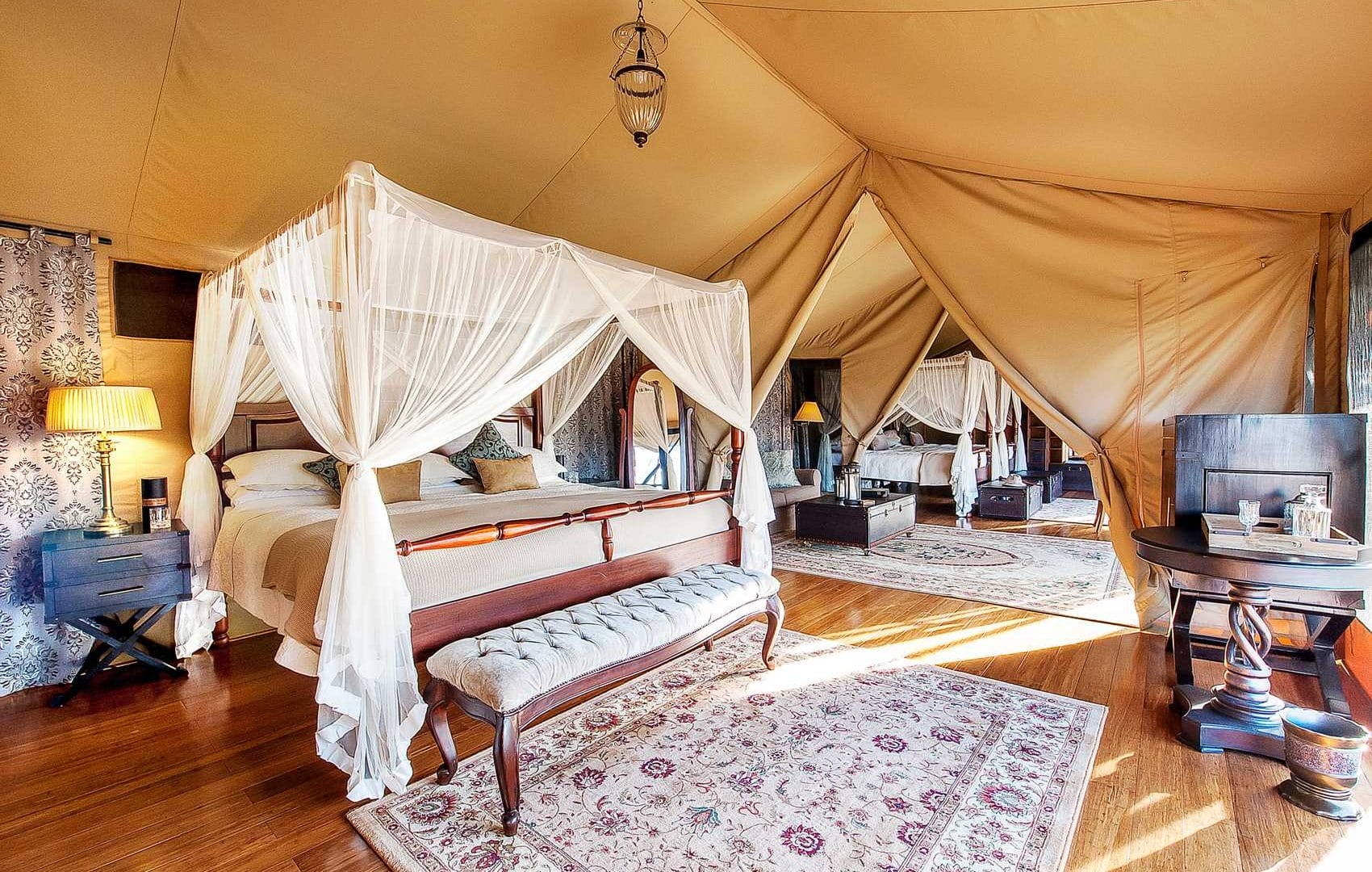
- Kenya in June
Africa's best authentic tailor-made safaris
- Kenya Gallery
- Where to go
- Experiences
- Travel Advice

By Matthys van Aswegen
Safari Travel Planner
Nairobi and the central highlands are warm by day, cool at night, and receive little rainfall. Mombasa and the coast are hot by day, relatively cool at night, and receive a fair amount of rain.
The Rift Valley and western interior are hot by day, cool at night, and receive occasional rain. Some of the rains brought in by the Kusi monsoon occur early in June. However, as the month progresses, the cooler, drier weather develops.

The climate throughout June becomes much more comfortable than in the preceding months, particularly in the highlands.
Although drier, it is likely to remain cloudy, keeping the sun and higher temperatures at bay. This can be a great time to travel with children as you don’t need to worry about humidity and constant sunscreen application.
- June is one of the wettest months on the coast and not suitable for beach holidays or underwater activities.
- Game viewing in most safari destinations in Kenya is good in June.
- First held in 2008, the annual Lake Turkana Festival, a colourful showcase for 14 traditionalist ethnic communities associated with the northern deserts, takes place in the small town of Loiyangalani, usually in June.

We have 5 rating for 447 reviews
We have 4.7 rating for 35 reviews
We have 4.9 rating for 73 reviews
- Kenya in January
- Kenya in February
- Kenya in March
- Kenya in April
- Kenya in May
- Kenya in July
- Kenya in August
- Kenya in September
- Kenya in October
- Kenya in November
- Kenya in December
- Amboseli National Park
- Laikipia Plateau
- Masai Mara National Reserve
- Mombasa and Surrounds
- Mount Kenya and Aberdares
- Northwest Safari Circuit
- Rift Valley Lakes
- Samburu Springs and Mount Meru National Park
- Southern Safari Circuit in Kenya
- The Coastal Belt
- Tsavo East and West
- Watamu and Malinda
- Where to Go on a Kenya Safari
- Camel Safaris
- Walking safaris – short walks, 2 – 3 hours
- A Relaxed Safari Holiday in Kenya
- Adventure Holidays in Kenya
- An Active Holiday in Kenya
- Beach and Bush Safari Holidays in Kenya
- Big Five Safari Holidays in Kenya
- Birding Safari Holidays in Kenya
- Foodie Holidays in Kenya
- Kenya Honeymoon Safari
- Kenya Photographic Safari
- Malaria Free Holidays in Kenya
- Walking Safari Holidays in Kenya
- Couple Holiday in Kenya
- Family Safari in Kenya
- Solo Travelling Through Kenya
- Affordable Safari Holiday in Kenya
- Budget Safari Holiday in Kenya
- Luxury Safari Kenya
- Changing Money in Kenya
- Cultural Practices of Kenya
- Getting Around in Kenya
- Health Care in Kenya
- Is Kenya Safe?
- Kenya Food and Tipping
- Kenya Visa Requirements and Fees
- Kenya vs South Africa
- Kenya vs Uganda
- Languages in Kenya
- Lodges in Kenya: The Do’s and Don’ts
- Medical Emergencies in Kenya
- Medical Insurance in Kenya
- Medical Requirements for Kenya
- Packing List for a Kenya Holiday
- What Vaccinations do I Need for Kenya?
- When to Go to Kenya
- Wildlife in Kenya
- Kenya Safari
Join our newsletter
Sign up to receive exclusive offers, safari inspiration, and expert tips straight to your inbox.
By proceeding you agree to our Privacy Policy and Terms & Conditions .
POPULAR DESTINATIONS
Popular tours.
- Luxury Explorers Safari in Botswana
- Romantic Cape Town & Luxury Safari
- Masai Mara and Serengeti Combo
- Wildlife and Gorillas of Rwanda
- Luxury Honeymoon in Mauritius
POPULAR ACCOMMODATIONS
- Sabi Sabi Earth Lodge
- Chobe Game Lodge
- Khwai Lediba
- Camp Okavango
- Khwai Leadwood
QUICK LINKS
- Safari Cost Estimator Tool
- [email protected]
- Travel Guides Plan your adventure
- Destinations Our favourite places
- Tours Book a trip
- Travel Companies Independent specialists
- Travel Guides
- Destinations
- Travel Companies
The best time to visit Kenya for safari
When to go on safari in kenya.
Stuart Butler
- Month to month
- Climate by region
- Safari seasons
Festivals and holidays
- Samburu, Buffalo Springs & Shaba
- Meru National Park
- Lake Nakuru National Park
- Amboseli National Park
- Nairobi National Park
- Off the beaten track
- Kenya besides safari
The best time to go on safari in Kenya: Quick reference
In my experience, the best times to go on safari in Kenya are the two "shoulder seasons" in June and later in September-October.
June is perhaps my overall favourite month. Everything is green after the rains, it's nice and cool with far fewer tourists than the July peak season, and the first migrant wildebeest might start to arrive from the Serengeti into the Masai Mara .
Likewise, during September-October the crowds are starting to thin out, the migrating herds should hang around until about the middle of the month and there are good opportunities to watch them cross the Mara River. Wildlife viewing in all the other parks is also excellent and on the coast the sea is calm and perfect for snorkelling and diving. Temperatures are idyllic.
On the other hand, the worst month for safari in Kenya is probably April: the height of the wet season, with many camps closed and roads washed away.
Overall best months: June & September-October
High season: July-September & Christmas-February
Low season: March-April & November
Best weather: February & September
Worst weather: April
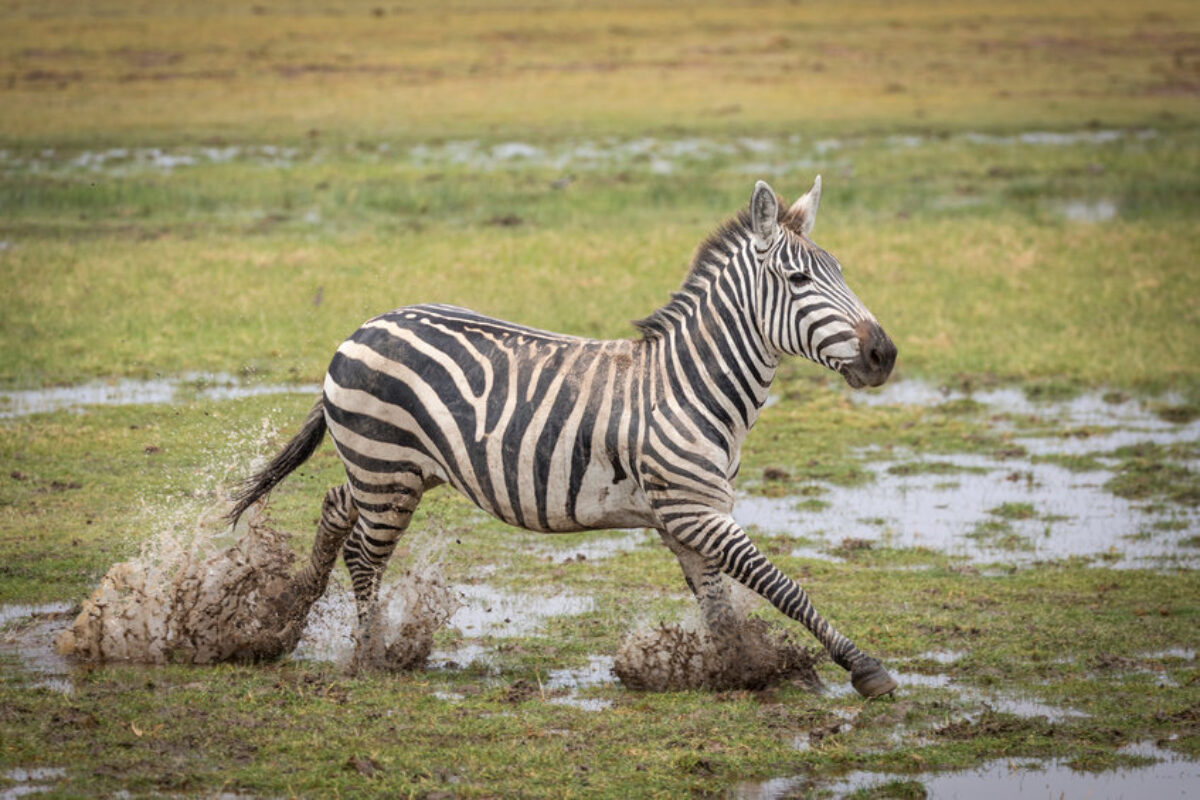
A zebra trudges through the rains Amboseli National Park
Featured Trips
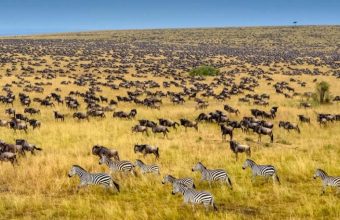
Tanzania and Kenya Safari
The greatest safari on earth.
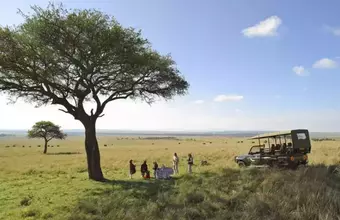
Affordable Masai Mara Safari
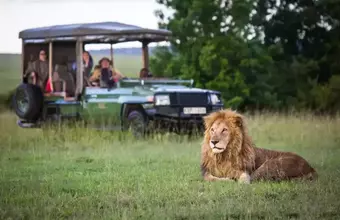
Enchanted Kenyan Safari
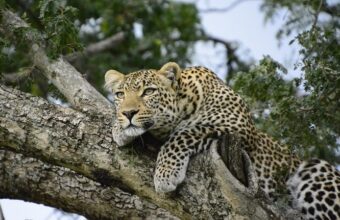
Family Memories
16 day private guided safari.
Samburu, Rhinos and Mara Safari
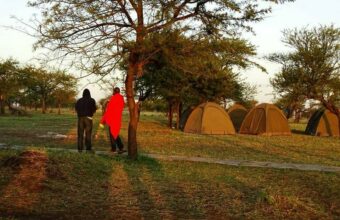
Kenya & Tanzania East African Adventure
21 day small group tour.
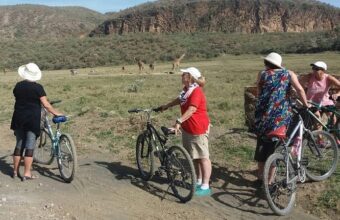
A Taste of Kenya
19 day small group tour.

The best time for safari in Kenya
Safari in kenya month to month.
January & February
This is a hot and dry period. Animals gather around water holes and river banks which makes for a good period to be on safari. Many migratory birds are present. On Kenya’s coast, water clarity is at its best between January and February. A busy time for tourism, especially the start of January.
The start of the long rainy season and generally a bad time to go on safari. But, with few other visitors and lower prices if the rains are late arriving then this can be a good period.
The height of the wet season. Many safari camps close and roads can be washed away in flash floods. A bad time to be in Kenya.
The first part of May is similar to April, but by the tail end of the month things should be starting to dry out. The landscape will be lovely and green and although the safari camps will be starting to re-open, prices remain low. If you’re lucky with the weather then late May can be a lovely time to visit.
A superb time to be in Kenya. Everything is nice and green, the high season crowds are yet to arrive, the temperatures are pleasantly warm (but note that it can be miserable on the coast) and the wildebeest will be starting to mass on the Kenya-Tanzania border which makes for some exciting river crossing spectacles.
Although best known for the wildebeest migration, June is also the beginning of the humpback whale migration. Head to the Watamu Marine National Park to see whales — and dolphins — on boat tours between June and August.
Generally dry throughout the country with spectacular wildlife viewing in the parks and reserves. Wildebeest flood the plains of the Mara. The coast is now hot and dry. But this is also a busy and expensive time to visit.
August & September
A repeat of July, but by September there is a slight tail off in visitor numbers as school holidays end.
A superb time to visit. The wildebeest should hang around until about the middle of the month and there are good opportunities to watch them cross the Mara River. Wildlife viewing in all the other parks is also excellent and on the coast the sea is calm and perfect for snorkelling and diving. Temperatures are idyllic.
Safari prices start to drop as tourists head home and the short rains fall. Even so, this isn’t a bad time to be in the country as the rains are rarely strong enough to totally disrupt your travels. Migratory birds start to arrive.
The country is nice and green after the short rains and there are birds everywhere. The Christmas period is a busy tourist season but if you can come before that then you’ll benefit from lower prices and a tranquil safari.
Kenya climate by region
There are two things that define Kenyan weather: altitude and the monsoons. With the equator running straight through the middle of Kenya you might expect the country to be relentlessly hot. But it’s not as simple as that. Kenya is rippled in high mountains and plateaus and so altitude plays an immensely important role in Kenyan weather patterns.
In fact, it’s possible to stand in searing 40 degree heat in the northern deserts and snap a photograph of the snow and ice covering the summit of Mt Kenya!
The coastal strip is low-lying and has a hot and humid tropical climate year round (although things do cool down quite considerably between June-August). The vast northern deserts and semi-deserts (where parks such as Samburu are located) are always hot – sometimes too hot for comfort. Rain is also rare throughout the north.
The central and western parts of the country are much cooler, wetter and greener and for this reason this is where the majority of Kenyans live. The climate in Nairobi and other highland areas is one of almost eternal spring, and nights can get quite chilly.
This area is home to the Laikipia area conservancies, the Aberdares National Park and Nairobi National park among others. In the far west of the country, around Lake Victoria, the altitude is a little lower and it can be hot and humid with frequent rainfall.
In between the low and high altitude extremes is the Rift Valley. Fairly low lying and prone to drought, this is where some of the most famous national parks and wildlife conservancies (such as Tsavo and Amboseli) are located. It can be very hot here in the middle of the day but cool enough to need a fleece at night. The Masai Mara National Reserve is a bit higher and wetter and while days in the Mara are often idyllic it can be damn right cold on an early morning safari.
Kenya’s rainfall and monsoons
Aside from temperature the big thing that will impact when you visit Kenya and where you go is the rainfall.
Kenya receives two monsoon rains a year. The long rainy season runs from around March to May and the short rainy season provides the wet stuff between about late-October and mid-December.
During the long rainy season you can expect rain throughout the country on a near daily basis. Rivers can burst their banks and roads can get washed away. Most of the time the rain falls in the afternoon, but it sometimes rains all day. Nairobi can have what feels like endless days of grey, dreary drizzle. Throughout the country, even when it’s not raining it can be very cloudy. In general this is not the best time to visit Kenya.
The short rains are less predictable and may fail to materialise at all. However, as with the long rains, the rain mostly falls in the afternoon and not always everyday. There can be pleasant sunny periods in between the rain showers.
With changing climatic patterns these monsoon periods have become much less defined and in recent years there have been droughts when it should have been raining and floods when it should be bone dry.
Even though it’s not technically a wet season, the period between June and September still sees regular rainfall over large parts of the country, in particular the highland areas, the west and the Masai Mara. Temperatures are neither too hot nor too cold and everything is lovely and green. On top of that this is also when the wildebeest migration rolls through the Masai Mara. Overall this is a great time to go on safari in Kenya.
The driest and hottest time of year is January to March. On the coast and at lower altitudes it can be overwhelmingly hot. At this time of year the vegetation in many areas is dry and sunburnt but it’s a good time to be on safari – especially in a park such as Samburu or Tsavo when animals are drawn to the remaining water sources.
One of the biggest surprises visitors to Kenya get is how chilly it can get on a safari, especially those at higher altitudes such as the Maasai Mara and Laikipia where nighttime temperatures can fall below 10C. Factor in the windchill when zipping along in an open jeep at dawn and the reality is that safari-goers can become quite cold. Pack layers and be prepared.
Green, ‘shoulder’ & peak seasons
When booking a Kenyan safari you’ll likely hear the terms green season, shoulder season and peak season bandied about. But what do they all mean?
Peak season means high tourism season (July-September/October and Christmas to late February). Naturally enough this corresponds with the best times to be in Kenya, but it also means lots of other tourists, booked out lodges and high prices.
Shoulder season (roughly late-May, June and October) is the in-between time of year. For reasons of weather or wildlife sightings, the shoulder season is considered not quite as good as high season but much better than low season. There are fewer tourists and lower prices than in high season. A little secret: the advantages of travelling to Kenya in the shoulder season outweigh the negatives, and this is perhaps the best time to travel here (except for on the coast, which can be unexpectedly cold and wet).
The term ‘green season’ was perhaps coined to make potential visitors think of lush green landscapes. In reality though it means low season and it covers the months of mid-March to early May and November to early December. Kenya will be looking beautifully green at this time, but that’s because it rains – and at times it rains a lot!
Many safari camps are closed and getting around can be hard. This is generally a bad time to visit Kenya. On the plus side there are few other visitors and safari prices are as low as they get. Northern parks such as Samburu, Buffalo Springs and Shaba can actually be quite rewarding at this time.
Kenya generally observes a Christian calendar so major celebrations and holidays such as Christmas and Easter are observed countrywide. Muslim holidays such as Eid ul Fitr will be observed in most coastal and north eastern areas. Only the holy Islamic month of Ramadan will have an effect on your travels — during this time, you might find stores and hotels closed during daylight hours and at sunset for the breaking of the fast.
There are fewer music and cultural festivals than you might expect, but for a chilled out festival, try the Lamu Yoga Festival in February — five days of yoga in stress-free, car-free Shela, Lamu. Various styles of yoga are taught by instructors from all over the world and are combined with celebrations of Swahili culture such as sunset dhow cruises.
The Kenya Music Festival is held over ten days in August in Nairobi. It draws big name African and international acts.
The end of the year brings the Rusinga Cultural Festival — an extravaganza of colour, music, dance and sport to celebrate and preserve the culture of the AbaSuba people of Uganda and Kenya. Held on the last Thursday and Friday before Christmas on the islands of Rusinga, the celebrations address various social and cultural issues. The headlining event is the boat races in wooden canoes where both men and women row along the lake in clouds of song and dance — not to be missed!
When to go FAQs
Your questions, our expert answers, is february a good time to visit the masai mara, or would june-july be better what would be the differences.
February is a very good time for safari in the Masai Mara , but also very different to the experience in June and July.
It's hotter and drier in February and generally there are fewer other tourists. There will still be plenty of zebra and wildebeest around but these are the non-migrating resident herds, so they don't form the massive iconic herds that you might see on TV.
July is good because the migrant wildebeest are all normally in the Mara by then, but its also absolute peak high season so can be busy and expensive. June is perhaps my overall favourite month. Everything is green after the rains and it's nice and cool with far fewer tourists than July, but the first migrant wildebeest might start to arrive (it all depends on rains and the state of the grass).
In short, all three months are excellent but each is different so it might be best to go with whatever just suits your timings better.
I will be in Kenya in early March and am looking for a five day safari for wildlife photography and birdwatching. Where would you recommend for me noting it is the start of the rainy season?
Early March is still a bit early for the rainy season so you might just get the odd thunderstorm. If birds are your real interest and you only have five days then probably the easiest is to go down to the Masai Mara via the Rift Valley lakes of Naivasha and Elementia or Nakuru. This would give you a good range of avian habitats and species in a short space of time. Don't forget as well that Nairobi itself has some excellent birding in the various forests and parklands in and around the city. Plus of course, there's the superb Nairobi National Park where you will see a lot of wildlife and birds.
Masai Mara safaris
About the author.
Stuart is an award-winning travel journalist covering safari, trekking and conservation in Africa for the Lonely Planet, Rough Guides, BBC, Bradt Travel Guides, amongst many others. He is the author of Walking With The Maasai , a journey through some of Kenya's lesser-visited Maasai lands.
Featured tours
Other guides you might like, safari in kenya, kenya's best safari reserves and camps, south africa safari, an expert guide to safaris in south africa.
Anthony Ham
Wildebeest migration safaris, an essential guide to planning a migration safari in tanzania and kenya.
Hans Cosmas Ngoteya
Safari in zambia, an expert guide to zambia's best safari parks, camps & lodges.
Sarah Kingdom
Safari in tanzania, an expert guide to tanzania's best safari parks & camps, safari in botswana, an expert guide to botswana's best safari reserves, camps and experiences, where and how to see the big 5 on safari in africa, safari in africa, our travel writers' top africa safari picks, zimbabwe safaris, an expert guide to the best safari camps in zimbabwe, chimpanzee trekking, an expert guide to seeing chimpanzees in the wild.
Philip Briggs
Namibia safari, an expert guide to the best safaris in namibia.
Melanie van Zyl
Why horizon guides.

Impartial travel guides
Our guides are written by the leading experts in their destinations. We never take payment for positive coverage so you can count on us for impartial travel advice.

Expert itineraries
Suggested itineraries and routes to help you scratch beneath the surface, avoid the tourist traps, and plan an authentic, responsible and enjoyable journey.

Specialist advice
Get friendly, expert travel advice and custom itineraries from some of the world's best tour operators, with no spam, pressure or commitment to book.
Our guides are 100% impartial and are written by independent, professional travel journalists. We make money by charging carefully-screened travel companies to list their business on our website. Our advertisers have no influence on our editorial content and we never accept payment for positive coverage.
Read more about how we work and what we believe in here .
- Travel guides
- Work with us
Sitemap , Privacy Copyright © 2024 Horizon Guides

- Kenya safaris
Kenya safari guide – where & when to go, and what to see
Kenya safaris rock! Kenya is one of East Africa’s premier safari destinations, with massive open savannah regions hosting a huge breadth and depth of African wildlife. Over 10% of the country is protected in some form or other, and national parks in Kenya rate as some of the best in the world. A safari in Kenya almost guarantees you a sighting of the big five African animals of lion , buffalo , elephant , rhino , and leopard . Alongside these big-hitters are hundreds of other species of African animals, and some of the world’s most diverse bird-life.
Straddling the equator, Kenya is dominated by the Rift Valley – a huge range of valleys strung along a 5,000 km crack in the earth’s crust that runs through East Africa. Within the Rift Valley are Africa’s highest peaks – in Kenya these are the volcanoes of Mount Kenya and Mount Elgon. East of the Rift Valley are the coastal plains, whilst the north of Kenya is made up of arid wastelands. The prime Kenya safari destinations are the Central Highlands and areas within the Rift Valley. The south of the country hosts the great migration of plains animals and their predators each year between June and November. In short, Kenya safaris are up there with the very best in terms of wildlife and scenery.
Self-drive safaris are an option in many national parks in Kenya, though to enjoy full access to the most remote (and tourist-free) areas you’ll need a 4WD car or jeep. If you fancy taking a tour or arranging your own guide and/or driver have a look at our list of safari tour companies in Kenya before arrival in the country.
Alongside safaris and wildlife spotting, a visit to Kenya allows you to easily extend your safari with a visit to a resort on the Indian Ocean coast, or with activities such as trekking, hiking, sailing or diving .
Useful resources
- Book a Kenya Safari
- Kenyan Ministry of Tourism
- Kenya Wildlife Service
Kenya safari highlights
Experience maasai culture.
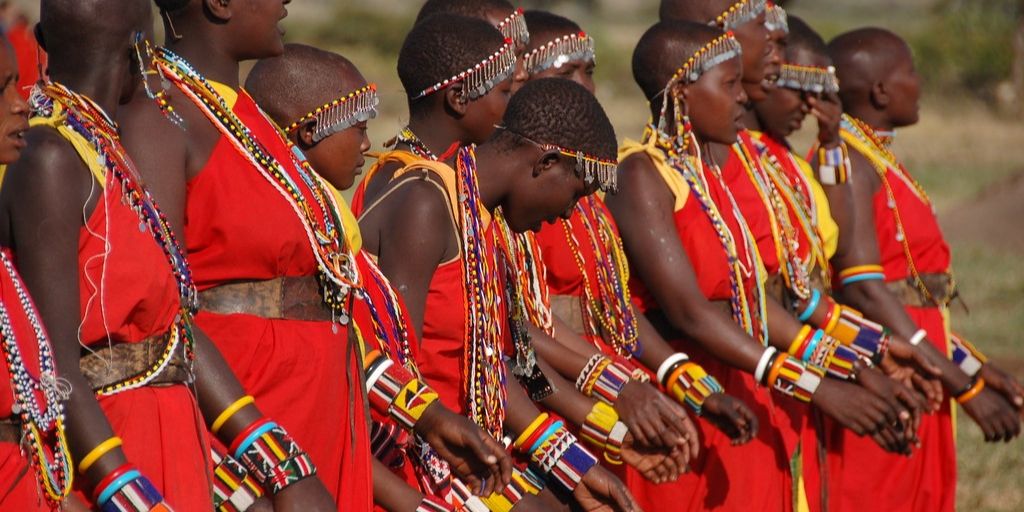
The Maasai are one of the few African tribes who have retained most of their traditions, lifestyle, and lore – along with their distinctive red robes. Many safari lodges and operators work with local Maasai on community projects. Experiencing some time in a Maasai village whilst in Kenya is a unique cultural experience that will help put your visit in context.
Big five spotting

Big five spotting in Kenya is high on most visitor’s safari checklist, and with Kenya’s superb network of national park gems seeing Africa’s biggest beasts up close and personal is a realistic goal. Destinations rich in lion, leopard, elephant, rhino, and buffalo are clustered in the south of the country, particularly Amboseli, Masai Mara and East and West Tsavo (for the Tsavo lions !) national parks.
Watch the ‘Great Wildebeest Migration’

Indian ocean beach perfection

Best time to safari in Kenya
The peak tourist season in Kenya is January and February when the weather is consistently warm and dry, with wildlife easy to spot in large concentrations. If you take a Kenya safari in peak season expect to be in company with crowds of tourists, and paying top dollar for your safari. If you’re specifically after catching sight of the annual great migration, June to October is the time to head to the Masai Mara National Park in southern Kenya.
The long rains hit Kenya through March, April and May, and the short rains from October to December. During the short rains, it generally rains only for short periods at a time, meaning your wildlife viewing will not be too disrupted. This is the time you can get some great deals on safari tours, or safari lodges if you’re travelling independently.
Flights To Kenya
Search, track and book flights to Kenya, from anywhere in the world.
Kenya Accommodation
Find safari accommodation in Kenya – from budget campsites to luxury lodges.
Kenya Car Hire
Considering a self-drive safari? Research and book car hire in Kenya.
Activities in Kenya
Search and book things to do in Kenya – tours, excursions and activities.
National parks in Kenya
With a stunning array of wildlife and more than 10% of the country given over to national parks and reserves, Kenya is undoubtedly one of the world’s best safari destinations. Whilst the world-famous Kenyan national parks such as Masai Mara and Amboseli National Parks can be uncomfortably heaving with tourists in January and February, Kenya has plenty of smaller, out of the way national parks that see only a trickle of visitors year-round. As such it’s well worth taking the time to consider whereabouts in Kenya to go on safari if you’re visiting during peak season.
Top Kenya national park picks
Masai mara national reserve.
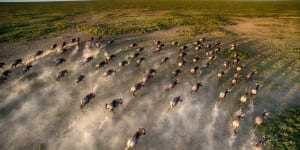
Situated in southwest Kenya, the Masai Mara is part of the northern section of the Serengeti National Park, and is generally recognised as one of the greatest wildlife reserves in Africa. The reserve is famous for the abundance of predators – particularly big cats – and the great wildebeest migration to feed these predators, as well as the Maasai people themselves.
- Lake Nakuru National Park
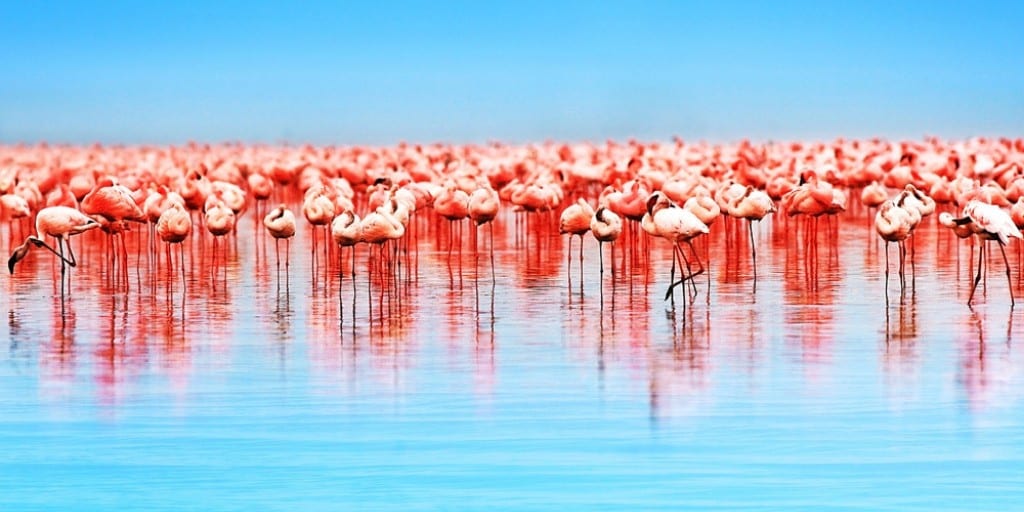
The stunning Lake Nakuru National Park is on the floor of the Great Rift Valley, surrounded by bushy grasslands and woods. There are 56 species of mammal in the park, but the star show are the thousands of flamingos, arriving in their millions some years.
- Amboseli National Park

Crowned by Africa’s highest peak, Mount Kilimanjaro, Amboseli is one of Kenya’s most popular parks . The name ‘Amboseli’ comes from the Maasai language and means ‘salty dust’… perfect for the large herds of elephants that roam the park.
- Meru National Park
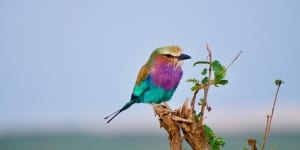
Meru National Park is a Kenyan park is located 350 km from Nairobi, featuring multiple landscapes including grasslands, swamp, jungle and rivers. It’s a birders paradise with over 427 recorded bird species, in addition to the big five .
All national parks in Kenya
Use the map below to locate all national parks in Kenya. Click the icons for more info.
Get Directions
- Aberdare National Park
- Arabuk Sokoke National Park
- Hell’s Gate National Park
- Kakamega National Park
- Lake Bogaria National Park
- Malindi Watumu National Park
- Masai Mara National Park
- Mount Elgon National Park
- Mount Kenya National Park
- Nairobi National Park
- Saiwa Swamp National Park
- Shimba Hills National Park
- Tsavo National Park
Kenya safari resources
Kenya safari companies.

There are plenty of companies offering safari tours around Kenya. The focus is on the high end, but there are some companies that specialize in mid and budget safaris. Check out our reviews of safari tour companies in Kenya .
Kenya safari lodges
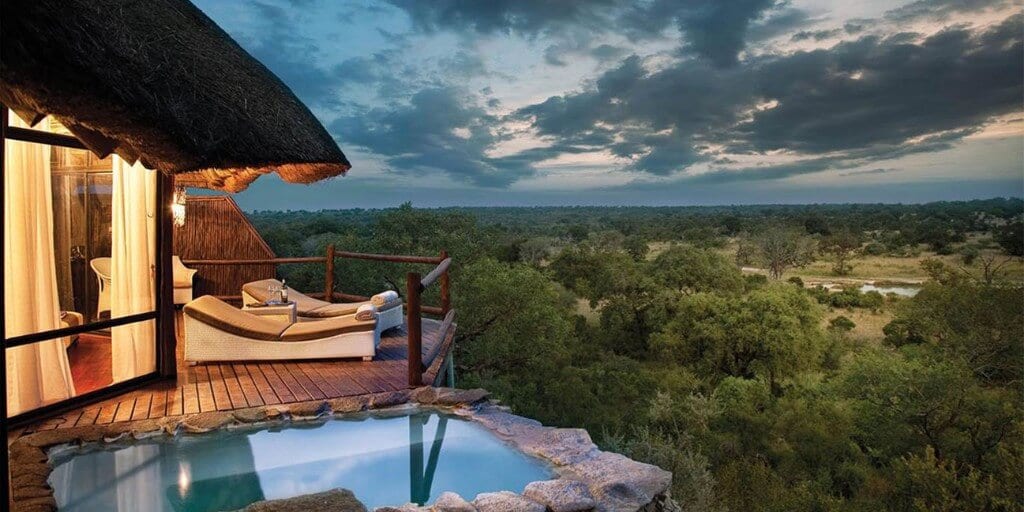
As a tourism-focussed country, Kenya has plenty of choice when it comes to safari accommodation. Lodge standards vary from rustic to modern, from the simple room to extreme luxury with en-suite private plunge pool. Search and book accommodation in Kenya .
For a trip to Kenya, travellers are required to apply for a visa. The easiest, most commonly used visa for going on a safari in Kenya, is the Kenya e-visa . It is valid for 90 days, and can even be extended once to 180 days once you arrive in Kenya. The visa can easily be applied for online and will save you the hassle of having to apply at an embassy or consulate.
Read safari guides to all countries
Botswana safaris , Namibia safaris , Rwanda safaris , South Africa safaris , Tanzania safaris , Uganda safaris , Zimbabwe safaris
Do you have any experience of planning or going on safari in Kenya?
We’d love to hear any feedback or tips you may have – please get in touch , or add to the comments below.
Top countries for safaris
- Botswana safaris
- Namibia safaris
- South Africa safaris
- Tanzania safaris
- Uganda safaris
Safari basics
- Safari animals
- How to find the right safari company
- When to go on safari
- What to take on safari
- Safari clothing – what to wear
- Safari rules & etiquette
- Wildlife spotting tips
Most read articles
- All about the ‘big five’ animals
- Collective nouns for animals
- Safari movies to watch before you go
- The world’s fastest land animals
- Apex predators
- 10 Fascinating African tribes
- The biggest animals in the world
- 17 Epic hybrid animals
- The world’s ugliest animals
- Why are flamingos pink?
Africa’s best game reserves
- Chobe National Park, Botswana
- Etosha National Park, Namibia
- Kruger National Park, South Africa
- Masai Mara National Reserve, Kenya
- Moremi Game Reserve, Botswana
- Okavango Delta, Botswana
- Serengeti National Park, Tanzania
Session expired
Please log in again. The login page will open in a new tab. After logging in you can close it and return to this page.
Detailed Kenya Safari Packing List (+ Free NO BS PDF)
An African Safari is one of those things that is in many peoples bucket list. Kenya, being one of the most popular safari destinations, may be the destination you have settled on for your African safari and you may be asking yourself what you should take with you.
Having lived in Kenya all my life and visited all of the most popular national parks in Kenya, I thought it would be helpful to write a comprehensive Kenya Safari Packing list that has packing suggestions broken down by month. This guide will help you plan what you should carry when coming to Kenya for your Safari.
Let me plan your African Safari
From creating your custom itinerary to handling bookings with safari companies, and sending you reminders for key details— I take care of it all so you don’t have to. Focus on the excitement of your trip, and leave the planning to me.
I am accepting only 3 spots this month so book now to secure your spot.
One-time payment of $350
In addition to this, I have also prepared a free printable packing list in a PDF with all of the items I have indicated below. Download it for FREE below
This post is long so here is a summary to help you jump to the parts of the article that interest you:
Clothing General Clothes for Adults Beachwear Shoes Clothing Tips Gadgets Gadget Tips Accessories & Miscellaneous items Toiletries Packing Suggestions Month By Month Plastic Bags are Banned
General Clothes for Adults
Pants (4 pieces ).
Your best option when choosing trousers for your Kenya Safari is either brown, green or grey khaki pants. The reason why these colors are the best because they are neutral and do not attract animals attention.
Avoid black, and blue trousers. They attract tsetse flies and also can easily draw the attention of the wild animals you will be viewing.
You can reduce your load if find pants whose legs can be unzipped into a short.
Shorts (3 pieces)
You are likely to visit the beach as you conclude your safari and Mombasa is unbearably hot and humid for most of the year. Shorts will help you stay cool there. Please read about some of the places that it’s inappropriate to wear shorts in Kenya in this article I wrote .
Underwear (Enough for the length of your Stay)
Kenyan laundry services do not wash underwear. It’s actually a cultural taboo to wash someone else’s undergarments. You will either have to wash it yourself or have enough to last you the entirety of your safari in Kenya.
Your underwear needs to be light and be able to breathe in hot and humid environments. They also need to absorb sweat well since you will be in the sun and hot environments for most of your day.
Sports Bras: Kenyan roads can get really bumpy and these will help you stay comfortable. All the roads on Kenyan Game parks are dirt roads and many get potholes in the rainy season.
Polo Shirts/ Tshirts (8 Pieces)
These need to be light and sweat absorbent due to the heat. You will also need to avoid choosing bright shouting colors like red, blue and black and white. Go for neutral colors that blend in with the environment you will be in. Those are Forest green, Gray, brown, etc.
Avoid wearing camouflage or military fatigue-like clothing. It might get you in trouble with the authorities. African governments have a phobia for anything that looks military being worn by the general public. To avoid getting harassed by the Kenyan Police, stay clear of any camo clothes
Socks (7 Pairs)
Get a good comfortable pair that you would wear during the summer. They need to breathe and absorb sweat well.
Fleece Jacket (1 Piece)
This will come in handy in the cold evenings and early mornings. With morning and night temperatures reaching in the 59°F range, you will need to keep warm for those few hours. The heat picks up quickly so make sure the jacket is light enough to carry around when you have removed it.
Instead of a jacket, the ladies can carry a shawl. It will be useful on many other occasions other than the cold mornings so this is the better option for the ladies.
Long Sleeve shirt/ blouse
This will be useful in the evenings when you are outside. Mosquito bites are really itchy and you can protect your arms by putting on a long sleeve shirt in the evenings.
Kenyans are generally more liberal than those of some of our neighbors like Tanzania but we still hold very conservative views towards dressing. You can wear your regular swimsuit to the beach but keep in mind that topless swimming is not allowed in any of the beaches in Kenya. So in choosing your beachwear, you will want to carry the following:
- Your swimsuit
- Swimwear coverup
- Flipflops that you’re ok with getting wet
Comfortable shoes (not Boots) plus Sandals (one pair of each)
Don’t carry boots.
You will spend a lot of time seated. Either in the car or at the hotel. You will occasionally be standing in your car to view the animals but the rest of the time will be spent on your seat. Therefore, when choosing your footwear, you will need to pick a comfortable flat pair of shoes.
Avoid carrying hiking boots unless you are going to be doing some outdoor adventure stuff like hiking in Hells Gate or climbing up Kilimanjaro . Its overkill and you will be really uncomfortable if this is the only pair of shoes you carried.
Pick a sturdy pair
One thing you will need to pay attention to is how well built your shoe is. When out on safari, the nearest place you can buy a quality pair of shoes if the ones you were wearing get torn may be several hundred miles away. You need to have a shoe that will be strong enough to endure several hard trippings on a rock .
Pair of sandals or flipflops
These will come in handy if your hotel or camp doesn’t provide any. You will need them when going to shower. Some camps have showers that separate from where you will be sleeping and it would not be advisable to go there barefoot.
Waterproof raincoat or umbrella
This can be a light jacket to cover you up on the off chance you might be caught in the rain. You might have to walk from your car to the hotel building with the rain pouring hard and you will want to keep yourself and your equipment dry.
Clothing Tips
Safari clothes.
- Choose neutral colors that blend in with the bush environment. This will allow you to come up close to the wild animals without spooking them.
- Wear full-length pants on a safari drive. This will help you keep mosquitoes and other bugs from biting your legs when out on a game drive.
- Temperatures change within minutes in the morning and evenings. Layer up your clothes to keep warm in the morning but stay cool when it gets hot.
Avoid revealing clothing
Kenyans are pretty liberal when it comes to dressing. However, these are usually city dwellers and you will find that the people in the villages are more conservative with what they wear. I would advise you to pack clothes that are not very revealing when going for your safari. It would also be a good idea for the ladies to pack one set of clothes that cover up your knees, shoulders, and torso for when you will be out and about in busy markets and the streets.
Laundry services in Kenya
- Leave an allowance: Most laundry in Kenya is sun-dried and so you need to have an allowance of extra clothes just in case the load you gave takes time to dry. This can happen in the colder months of June and July.
- Kenyan Laundry doesn’t wash underwear: Most of the hotel staff dealing with laundry are male and it’s considered a cultural taboo for a man to wash ladies undergarments. For this reason, almost all the hotels you will visit in Kenya do not wash undergarments.
Camera with Zoom Lens
Your camera needs to zoom in to animals that may be at a distance. Some animals are either shy or rare you may not be able to get a good shot if you have the regular kit lens. Shop around for a good lens for the safari.
Extra Memory cards
If you are anything like me, you get trigger happy with your camera when you see something you like. To make sure that you don’t run out of memory space, have a number of extra memory cards for your camera. Expect to take about 1000 photos per day if you are very trigger happy and this can add up if you are shooting at high resolutions.
If you decide to carry your cellphone with you, make sure it’s unlocked for international use. When you arrive in Kenya, you can get a Kenyan sim card and get connected.
The challenge with carrying your phone with you is that you will have signal issues when out in the bush and the phone might not serve its purpose.
This is one of the things that can easily get forgotten if you are carrying a large number of devices. One trick that I saw is plugging in all your chargers into an extension cable and packing the extension cable into your luggage. When charging your devices, you will just need to plug in that one extension cable and it will charge all your devices.
Power Adapter
Kenya uses 220-240 Volts electricity and this is different from the USA which uses 110V electricity. To ensure that you do not damage your devices, you need to use a power Adapter that converts the power to a voltage that is compatible with your devices.
Extension cable
Useful when you have a number of devices that need charging all together but only one power outlet.
When you have a number of devices, you may need to leave your things for safekeeping at the hotel reception. Having a lockable safety bag will help keep your things safe.
Gadget Tips
Carry old devices except camera.
To reduce the risk of losing a new device that you paid heftily for, carry an older phone and tablet. You will feel less afraid of losing your gadgets and
The phone needs to be unlocked
If you intend to use your phone or tablet to make a call or receive messages from home, you need to ensure that your phone is unlocked to be used internationally.
Accessories & Miscellaneous items
Bright sunny days can be a bit too much on your eyes and a good pair of sunglasses come in handy then. Sunglasses will especially be useful on the beach.
Notebook and pen
When going through immigration, you will need to write a number of things down and having your pen beats asking a fellow traveler for one. You may also occasionally need to write something like directions down and the notebook will help here.
Wide-brimmed Hat
You will, on several occasions, be out in the sun and there is no greater reprieve than getting your hat out. It will get really hot at midday and your hat will prove invaluable at that time.
Beanbag Cushion
As I mentioned earlier, the roads in the National Parks are not paved and are very bumpy. To get that crisp shot and reduce blurry photos, a beanbag will be of great use in keeping your camera steady.
First Aid Kit
You hope for the best but plan for the worst. Have a small first aid kit that has all the items that can help you in case of an incident when you’re out on safari.
Try to find a flashlight that you can strap on your head. You will find it useful when walking in the dark as you often will especially if you are in a camp that does not have indoor plumbing within your tent.
Portable Powerbank
When out on Safari, You will spend many hours away from a charging station and your power bank will be useful when you’re trying to keep that gadget running and you don’t have an immediate source of electricity.
Portable Packs Wet Wipes (1 for every day)
Sanitation is, at times is not taken as seriously as it should in some places in Kenya. You will need to take charge of your own hygiene by carrying a pack of kleenex that you will use whenever you are about to eat anything and after you leave a toilet.
You will find that some places do not have access to running water and this makes the hygiene issue much bigger.
You will be out in the sun a lot and you need to use a good sunscreen to keep you from getting sunburnt. I found the following article by WebMD on how to find a good brand of sunscreen. You might want to read it before making your purchase.
Bug Repellent
Africa has a lot of bugs. Some look scary and others are so small you might fail to notice them. The one insect you need to worry about is the Mosquito since it can give you malaria. Their bite is also really itchy and can a rash when scratched for long. Use bug repellent on your hands, feet and other exposed parts of your body when going outside at night and on your game drives.
Your full Prescription
If you are on any prescription medicine, make sure you carry enough to last you the entirety of your stay and a few additional days in case you have delays when going back home. I would also advisable for you to carry a written prescription from your doctor so that you can buy your medicine here in Kenya if you run out.
Toothbrush & toothpaste
Your hotel will not be providing these and you might not find your favorite brand if you plan on buying these over here. In addition to this, you might be several hours away from the nearest convenient shop when you are out on safari. For this reason, you will want to come prepared with everything you will need for the entirety of your stay.
Soap, Shampoo & conditioner
Your hotel will provide you with this but the brand and quality of soap may not be what you are used to.
Packing Suggestions Month By Month
The packing list I have described above would work for all parts of the year. However, below are suggestions of what you should pack if you are coming on any of the following months:
Kenya Safari Packing List January
January is sometimes a rainy month. If you will be coming in this month, carry a raincoat and a few sets of warm clothing in addition to the packing list I have described above. The shawl or fleece jacket will be important as well. Especially for the cold evenings. It doesn’t get very cold in the evenings so your fleece need not be very heavy.
Kenya Safari Packing List February
February is usually a dry month with hardly any rainfall in the whole month. The temperatures are usually high during the day and it will get slightly chilly in the evenings but not so so much that you would need a heavy fleece. You can probably survive on just a shirt in the evenings this month.
Kenya Safari Packing List March
The end of March is when the rains start in Kenya. This is the month you need a small portable umbrella and a raincoat. It does not get very cold during the day and the nights are also not very chilly. You will be ok if you carry a light fleece or shawl for the evenings but you may not need it since even the evenings are not very cold.
Kenya Safari Packing List April
This month is a lot like March in terms of rainfall. However, it starts getting colder in the evenings and this means that your shawl or fleece will be more important in this month. At the same time, mosquito populations are at their peak due to the puddles made by all the rain and the thick bushes where mosquito love to hide. Carry a lot of long-sleeved shirts and pants to keep your hands and feet from being bitten by the mosquitoes. Also, remember to carry your bug spray and ensure you have taken your anti-malarial medication before you come here.
Kenya Safari Packing List May
The month of experiences lower levels of rainfall compared to the previous months but the temperatures are now dropping. Your shawl and fleece will help with this. At the same time, there will be a lot of bugs, especially at night. If you can carry a can of bug spray, it will help clear them from your room. Sometimes, bugs enter your room if you leave the lights on in the evening and they can be difficult to remove if you don’t have bug spray.
The rainfall will not be high so you may not need to carry your umbrella if it’s too heavy but carry a light raincoat just in case it rains.

Kenya Safari Packing List June
June is the start of the cold season that lasts two months. You will typically need to wear something warm in most parts of the country both in the mornings and at night. The days are not typically sunny but the temperatures normally rise enough for you to be ok without a shawl or jacket.
In the month of June, you want to wear warm clothing in layers that you can take off as it gets warmer.
Kenya Safari Packing List July
July is the coldest month in Kenya. With temperatures going as low as 63 °F, you will need to carry heavier clothing and plan to dress in layers to allow you to shed off some of the clothing if it gets a bit warm. At the same time, have a fleece jacket or shawl for extra warmth in case it gets colder than you anticipated.
It does not usually rain but you can expect a drizzle that can get you wet if you are in it for a while. An umbrella will help with this.
Kenya Safari Packing List August
The month of August warms up and it gets dryer. Expect a lot of sun and mild to warm temperatures. You will not need to carry warm clothing but you can throw in a fleece jacket or shawl for the evenings and cold mornings that can get a bit chilly.
Kenya Safari Packing List September
September is also not a cold month. Apart from the evenings, and early mornings, you will be ok wearing light clothing. The day may get hot so carry light clothing so that you don’t get uncomfortable in the heat.
Kenya Safari Packing List October
We normally experience the short rainy season starting in the month of October. Carry something to protect you and your equipment from the rain like a light raincoat or small portable umbrella.
The rains are not accompanied by very low temperatures so all you need to keep you warm is your fleece jacket or shawl.
Kenya Safari Packing List November
The short rains end in November and the conditions are similar to those of October. Have your umbrella handy and your jacket or shawl to keep you warm in the evenings.
Kenya Safari Packing List December
We sometimes experience a few showers and thunderstorms in December so carrying your umbrella may be a good idea.
The nights will be chilly and there will be mosquito so plan to have something warm to cover yourself and pack some long sleeve shirts and pants to reduce the severity of the mosquito bites.
Plastic bags are banned
As a final word for this article, remember that plastic bags are illegal in Kenya and you will not be allowed to bring them with you on your safari. These include plastic zip-lock bags that might use to pack some of your toiletries. Use a different type of packagings like a cloth bag or plastic containers to avoid frustration at the airport.
You May Also Like
Is lake nakuru worth visiting no & here’s why.
When planning to come to a Kenyan Safari, one of the destinations on your list might include Lake Nakuru National Park. Being a small park…
Fly to Masai Mara – Don’t Drive (& Here’s Why)
When planning your trip to the Maasai Mara, you will be faced with an important question: should you drive or fly to get there. Flying…
Why You Shouldn’t Take a Taxi From Nairobi to Masai Mara
So you have just decided that you would like to go on an African Safari and have settled on the Masai Mara in Kenya. One…
Is the Masai Mara in the Serengeti?
When doing the research about the African Safari, you may have come across recommendations that you visit the Masai Mara and the Serengeti. One question…
Kenya Safari Cost (A Detailed Guide With Examples)
If you are anything like me you must have wondered how much a safari in Kenya costs. I’ll try to answer this question to the…
Can I Wear Shorts in Kenya?
Packing for your safari to Kenya can be a daunting task. When preparing what to carry, you will have a lot of questions and one…
THREE WAYS TO PLAN AND BOOK YOUR SAFARI WITH AFRICANMECCA
TRAVEL & OPERATIONS OFFICES
- United States
- United Kingdom
BEST TIME TO GO TO KENYA
When is the best time to tour kenya scroll down for details...
- Travel Guide
- Best Time To Go
Learn More On AfricanMecca Safari Tier Ratings & Experiences
- OVERVIEW - BEST TIME
- REGIONAL BEST TIME
- SAFARI & BEACH PRICES
- EXPERT RATING
- WRITE A REVIEW
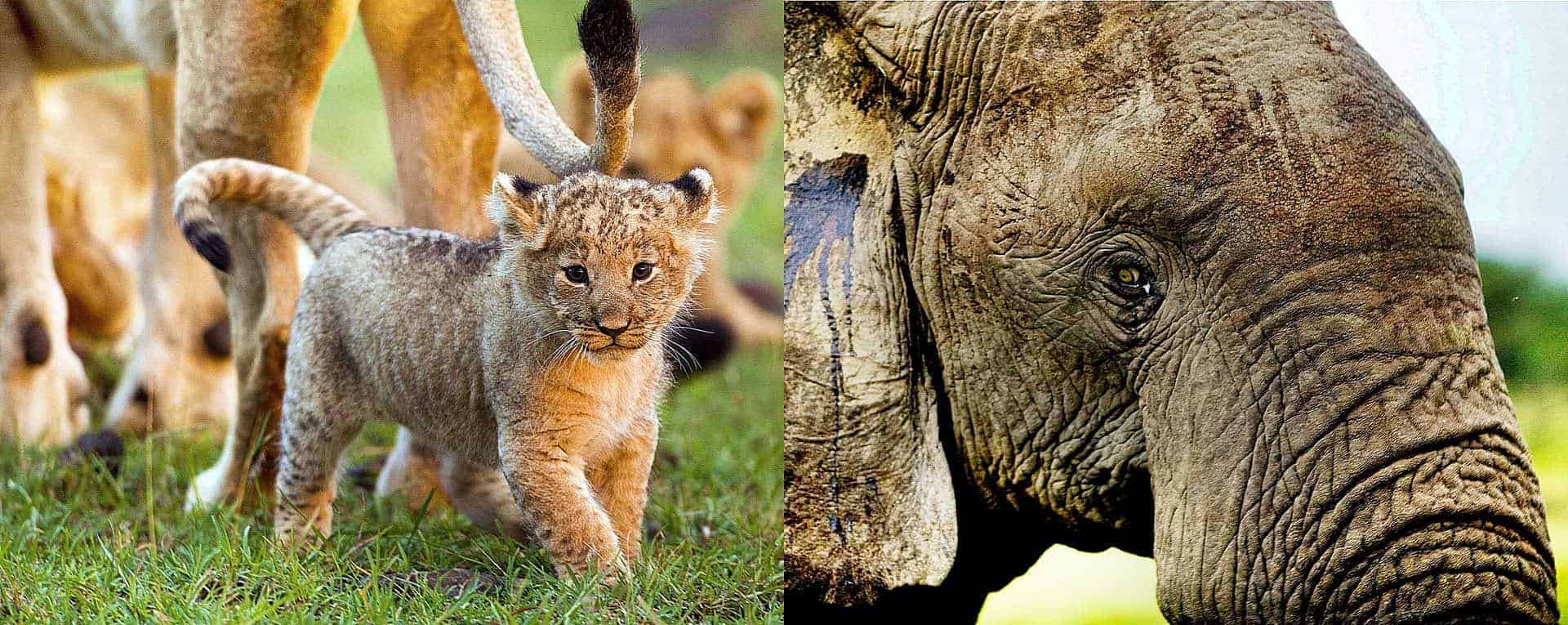
Select Your Southern Destination In Kenya
1. masai mara national reserve - best time to go, 2. amboseli national park - best time to go, 3. chyulu hills national park - best time to go, 4. tsavo east national park - best time to go, 5. tsavo west national park - best time to go, select your central destination in kenya, 1. mount kenya national park - best time to go, 2. nairobi national park - best time to go, 3. lake nakuru national park - best time to go, 4. lake elementaita - best time to go, 5. lake naivasha - best time to go, 6. nairobi city - best time to go, select your northern destination in kenya, 1. laikipia - best time to go, 2. samburu national reserve - best time to go, 3. northern frontier - best time to go, select your eastern destination in kenya, 1. meru national park - best time to go, 2. mombasa - best time to go, 3. watamu - best time to go, 4. lamu - best time to go, select your western destination in kenya, 1. lake victoria - best time to go.
Kenya Rating By AfricanMecca 4.6 Star Wildlife Exclusivity Activities Accommodations Authenticity Users ( 0 votes) 0 {{$data | json}} -->
- Exclusivity
- Accommodations
- Authenticity
CONTACT AND TALK TO OUR SAFARI EXPERTS TODAY TO KICK-START YOUR TOUR PLANNING PROCESS
Request Kenya Custom Or Tailor-Made Safari Pricing Based On Your Specific Travel Dates At Your Preferred Safari Tier Camp Or Lodge
Read More +
Safari prices for kenya.
Review individual itineraries and prices of our suggested Kenya safaris with the option of customizing your Africa tour based on your needs and preferences.
AFRICA TRIP IDEAS FOR KENYA
Review experiences available in Kenya from photo wildlife safari, horse and camel riding, walking, family to honeymoon beach vacation, dive, snorkel & fish etc.
PARKS & RESERVES IN KENYA
Review information on wildlife parks and reserves in Kenya i.e. Masai Mara, Amboseli, Samburu, Laikipia, Lewa, Tsavo, Chyulu, Nakuru, Meru and more.
ACCOMMODATIONS IN KENYA
Review information on safari lodges, camps, city hotels, coastal resorts in Kenya's pristine wilderness, cities, Swahili beach shores and idyllic islands.
BEST TIME TO VISIT KENYA
Review details on the best time to go to Kenya to visit its various wildlife outback, forests, rivers, islands, lakes, beaches, mountains and other wildernesses.
BEACHES & ISLANDS OF KENYA
Review Kenya's stunning Indian Ocean coast where the deep cobalt blue and turquoise waters gently wash up white sand beaches that create a tranquil setting.
KENYA COUNTRY PROFILE
Review country information and travel tips on Kenya i.e. geography, culture, history, climate, tipping guide, what to pack and wear, entry requirements and more.
CITY DAY TOURS FOR KENYA
Review city tour suggestions on full or half day options in Nairobi, Mombasa, Watamu, Lamu. Experiences can be customized around your vacation travels.
AFRICAN SAFARI PRICES
Check out safari prices and itineraries for parks and reserves in other African countries e.g. Tanzania, Uganda, Rwanda, Botswana, South Africa, Zambia etc. Namibia, Mozambique, Malawi and Zimbabwe are available on request.
AFRICANMECCA REVIEWS
On behalf of myself, my wife and my two adult daughters, I want to sincerely thank you and AfricanMecca Safaris for our fabulous recent safari to Amboseli National Park and Masai Mara National Reserve in Kenya.
Robert Schenkein - prVision Photography Studio - Colorado, United States
Dear Raza, The accommodations you recommended were superb. We loved them all -- Giraffe Manor, Wilderness Trails, Governor's Il Moran, Ngorongoro Crater Lodge and Mnemba Island Lodge.
Pat Bernard, Vice President, Global Channel Sales, Novell Corp - New Hampshire United States
Jambo Altaf and Raza! We are back on earth now after our fabulous honeymoon. This is to say THANK YOU so much for organising a week in Kenya that we will never forget.....!
Dr Krina Zondervan, Oxford University - United Kingdom
Jambo Raza!!! The safari trip was spectacular! Everything went off without a hitch. We loved the Masai Mara. The migration was awesome. You listened to what I wanted and delivered it perfectly.
Judi & Chaim Platt - Toronto, Canada
I cannot say enough about the quality of AfricanMecca. Their teams in Kenya and Tanzania were top notch. Raza, again thanks to you and your entire organization! We will be repeat customers.
Dan Kobick - Managing Director, PricewaterhouseCoopers - New York, United States
Jambo Raza, The Lake Nakuru outing was great! We saw lots of pelicans, some flamingos, both black and white rhino... We've already recommended a Kenya safari to friends and relatives. Thanks again
Scott Aaronson - Associate Professor, M.I.T - Boston, United States
This is to let you know my guests, The Bryant's, had a wonderful time on the trip Samburu, Masai Mara/Kenya, Chobe/Botswana & Victoria Falls/Zambia. Everything was perfect! Thank you..
Christine Milan - MT Carmel Travel - Connecticut, United States
East africa safari booking & tour holiday idea kenya, best safari planning ideas & trip experiences for kenya, 1. how to plan kenya safari trips (summary), 2. wildlife safari trip planning guide for kenya, 3. private & tailor-made safaris trip planning guide for kenya, 4. honeymoon safaris trip planning guide for kenya, 5. family safaris trip planning guide for kenya, 6. luxury safaris trip planning guide for kenya, 7. photo safaris trip planning guide for kenya, 8. cultural safaris trip planning guide for kenya, 9. primate safaris trip planning guide for kenya, 10. hike, trek & bush walk safaris trip planning guide for kenya, 11. birding safaris trip planning guide for kenya, 12. horseback riding safaris trip planning guide for kenya, 13. balloon safaris trip planning guide for kenya, 14. wedding safaris trip planning guide for kenya, 15. bush & beach safaris trip planning guide for kenya.
Kickstart Your Safari Planning
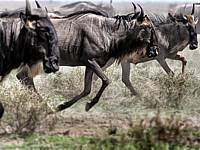
SAFARI PRICES
Find Kenya Safaris & Costs By Safari Tier Experiences
Safari Room Rate & Hotel Price Guide For Kenya
Kenya Reviews For Camps, Lodges, Beach & City Hotels
Park, Cities, Beach & Island Map Locations In Kenya
PHOTO GALLERY
Images & Pictures For Travel Destinations In Kenya
VIDEO GALLERY
Kenya Accommodation & Tour Destination Videos
ARE YOU PLANNING TO BOOK AN AFRICAN SAFARI TO KENYA?
Do You Need Knowledgeable, Experienced & Specialist Guidance For Your Travels In Kenya? Let Us Help Plan Your Trip Itinerary Correctly
EXPLORE MORE ON NATIONAL PARKS, CAMPS, LODGES, BEACHES & RESORTS IN KENYA
Safari tier ratings.
Understand Beach Tier Ratings & Experiences
KENYA PARKS & RESERVES
Kenya Beach & Island Planning Guide
KENYA LODGES & CAMPS
Beachfront Hotels & Resorts In Kenya
Top 10 Trip Reasons For Kenya Vacations & Holidays
HAVE YOU VISITED EASTERN AFRICA FOR A SAFARI IN KENYA?
Write A Travel Or Tourist Trip Review To Share Your Experiences
KENYA TRIP IDEAS
Safari Trip Ideas For Kenya
AFRICA SAFARI PRICES
Check Our Africa Travel Guide
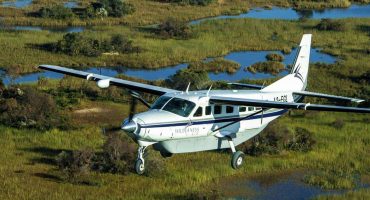
Baggage Guidance & Restrictions On Flying Safaris In Africa
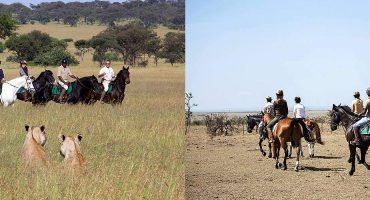
Masai Mara Horseback Riding Safari In Kenya With AfricanMecca

Times Square New York Hosts Kenya Tourism Board & Wilderness Safaris Meet Up
- Company Profile
- Why Travel With Us
- Our Safari & Tour Team
- Tier Ratings
- Awards & Press
- Customer Reviews
- SEARCH For Africa - Sustain & Conserve
- Travel Agent Support
- Jobs & Careers At AMS
- Newsletter Signup
- Contact Details
- Tanzania Travel Guide
- Kenya Travel Guide
- Uganda Travel Guide
- Rwanda Travel Guide
- Botswana Travel Guide
- South Africa Travel Guide
- Zambia Travel Guide
- Zanzibar Travel Guide
- Safari Trip Ideas
- Beach Trip Ideas
- Mountain Climb Trip Ideas
- Itinerary Trip Ideas
- Explore Park & Reserves
- Accommodations In Africa
- Read Trip Reviews
- View Photo Gallery
- View Video Gallery
- Read Our Blog
- Safari Prices & Itineraries
- Beach Prices & Itineraries
- Trek Prices & Itineraries
- City & Day Tours Prices
- Room Rate Guide
HOW TO CONTACT US
- Central African Republic
- Democratic Republic Of Congo
- Indian Ocean
- Republic Of Congo
- South Africa
- Latin America
- Galapagos Islands
- North America
- Polar regions
- Arctic Canada
- Australasia
- Gorilla Tracking
- Grizzly Bears
- Polar Bears
- Puma Tracking
- Snow Leopards
- Blue Whales
- Bengal Tigers
- Siberian Tigers
- African Lions
- Spirit Bears
- Lowland Gorillas
- Experiences
- Jungle Holidays
- Bush and Beach Combinations
- Conservation Travel
- Natural World Heroes
- Work with Us
- Consumer Protection Overview
- Privacy Policy
- Press and Awards
- Client Reviews
- Expedition Leaders
- Specialist Leaders
- Expeditions for Change
- Journey to Natures Edge
- Country: Settings: Country:
- Currency: Currency:
- Call Us 01273 691642
- Destinations
- Gorilla Trekking
- EXPERIENCES
- Bush & Beach
- Small Group Safaris
- In the Press
- Photography Safaris
- Journey to Nature's Edge
When to Go to Kenya
You can go to Kenya all year round, with the best months being January, February and July to October. Kenya enjoys year-round warm weather and relatively low annual rainfall due to Kenya’s equatorial setting. However, with a range of altitudes and the country’s two rainy seasons, it is possible you will experience some variation depending on when and where you visit.
Dry Season - June to October in Kenya
The best time to visit Kenya is during the dry season between June and October. During this time, there are fantastic possibilities to see the Great Migration in the Masai Mara, when millions of wildebeests and zebras travel over the savannah.
Wet Season - November to May in Kenya
Known as the low season, this period of rain brings about beautiful green scenery, ideal for wildlife photography. This can be one of our favourite times due to the quieter parks, the green back drop and plentiful game and birdlife.

Talk to a Kenya Destination Specialist
- Average Temperature: Highs - 25°C, Lows - 13°C
- Average Rainfall: 13mm
January is generally a warm and dry month in Kenya, with hot temperatures and low humidity. January is a great time to go on safari in Kenya, as wildlife is abundant and easily visible in the dry, open plains. Expect to see incredible birdlife and newborn animals during this period. It's also a great time to visit Kenya's beaches and coastal areas, as the weather is sunny and warm, and the sea is calm.
Kenya climate guide
What to do, when in kenya, experience the great migration - june to october in kenya.
This long dry season coincides with the Great Migration of wildebeest and zebra, a great time to visit Kenya. The exact timing of this renowned natural event can never be guaranteed, as it is ultimately up to the whims of the wildebeest, but it goes without saying that this is one of the best times to visit Kenya if you are wanting impactful wildlife events! The animals' movements can be estimated to a fair degree of accuracy, however: they can arrive in the Masai Mara as early as July, and generally can be found in abundance between August and September, beginning their journey back to the Serengeti around October. This is a spectacular event where you can witness river crossings and predator-prey interactions.
Kenyan Coast – December to March in Kenya
Enjoy the warm coastal weather with fewer crowds. Relax on the white sandy beaches of Diani Beach, ideal for snorkeling and kite surfing. Watamu is perfect for exploring the coral reefs and marine life, with excellent conditions for diving and snorkeling.
Experience Kenyan Culture
There are many cultural events throughout the year that ignite the whole country. Ramadan celebrations are in May and June, and the Mombasa Carnival is in November. June is also a popular time for cultural events in Kenya, including the annual Lamu Cultural Festival and the Madaraka Day celebrations.
What to Expect from a Kenya Safari Holiday

- +256 392 176327
- +256 702 805580
- [email protected]
Kenya Safaris - Ultimate First Safari Guide
Home / Destinations / Kenya
Embark on a once-in-a-lifetime adventure with our comprehensive guide to Kenya safaris for first-timers. Our expert travel guide will help you discover the best wildlife reserves, national parks, and accommodation options in Kenya, while providing valuable tips and tricks from experienced safari-goers. From the stunning landscapes of Maasai Mara to the majestic Mount Kenya, our guide covers everything you need to know to make the most of your safari experience in Kenya.
As the pioneer safari destination and one of the leading African safari destinations, Kenya is renowned for its spectacular wildlife shows, making it a top choice for family vacations. Our guide will help you plan an unforgettable adventure in Kenya, outshining other East African destinations. Whether you're planning your first or third safari, our travel guide is packed with the best ideas to help you create memories that will last a lifetime.
KENYA SAFARIS TRAVEL GUIDE
You have made a great decision by selecting Kenya Safaris for your first wildlife adventure in Africa. As the pioneer safari destination and one of the leading African safari destinations, Kenya is renowned for its spectacular wildlife shows , making it a top choice for family vacations and first-time safari experiences in Africa. Our guide is packed with the best ideas to help you create memories that will last a lifetime, outshining other East African destinations.
Kenya is a land of astonishing diversity and extraordinary tourist attractions, perfect for wilderness adventure vacations. Nairobi, the capital, is a bustling city where colonial buildings rub shoulders with modern skyscrapers, while steamy, coastal Mombasa retains its solid Arabic influence and history as Kenya's largest and busiest port. Kenya lies on Africa's east coast, bordered by Uganda to the west, Tanzania to the south, South Sudan and Ethiopia to the north, Somalia to the northeast, and the Indian Ocean to the southeast.
When planning your first-time safari in Africa, Kenya is an excellent destination to explore. It's also a great addition to gorilla trekking in neighboring Uganda or Rwanda. Don't miss out on the coastal beaches, which are a perfect getaway vacation to end your Kenya safari. Let our expert guide help you plan your unforgettable adventure in Kenya safaris as a first-time safari-goer.
- Explore the Great Rift Valley dotted with a string of lakes including Nakuru and Naivasha; fertile highlands with towering peaks such as Mt. Kenya; and a coastline and islands with long pristine sandy beaches and marine parks full of coral reefs and colorful fish. Its two major cities couldn’t be more different.
- The Big Five are all present and seen with various degrees of ease. Elephants, buffaloes, and unusually large lion prides are common. Leopards are more elusive but relatively easy to locate with a local pro guide. Up to three dozen black rhinos still survive. Even outside of the migration season, ungulates are well represented; there’s no better place for close-up views of the eland, the world’s largest antelope. A Kenya safari game drive will likely see giraffe, impala, gazelle, topi, Coke’s hartebeest, reedbuck, Defassa waterbuck, hippo, and warthog.
- Birders will find East Africa’s magnificent savanna birdlife around the Mara triangle, with more than 500 species recorded in and around its borders, including such perennial favorites as Lilac-breasted roller, Superb starling, and Little bee-eater.
- During annual wildebeest migration, wildlife drama eclipses during the multiple river crossings, punctuating the great herds’ three-month tenure in the Masai Mara, from August to October.
Trip Inquiry Form
About your trip.
When do you want to travel?
Month* —Please choose an option— January February March April May June July August September October November December
Year* 2024 2025 2026 2027
For how long (days)?*
How many people are traveling?*
Your inquiry.*
Important Personal Information
Our privacy policy includes a promise that we will keep your personal details private and not share them with any third party. We Intend to keep that promise.
The Great Migration
Over two million wildebeest and zebra cross the Mara river sometime between July and August, and they repeat this every year in larger numbers. It's not just the gnu that would attract you here, but also the healthy number of predators looking for an easy meal. This spectacle is not to be missed, especially if it's your first safari in Kenya.
Why Kenya Safaris Are Great For Your First Safari
Millions of plains game move in an endless cycle of birth and death from Tanzania's Serengeti through Kenya's Mara Triangle. It's like a movie sequence when they cross the Mara River with predators and prey locked in a life or death dance, the most extraordinary wilderness spectacle on earth that should take you to Kenya.
Big Game Viewing
Visiting Kenya’s legendary national parks and game reserves almost guarantees that you’ll see the famous Africa safari's Big Five animal popularised by the colonial white hunters in the early birth of Africa safari. And where there's big game, there are definitely huge herds of plains animals and hundreds of colorful birds.
Mythical Nomadic Tribes
Maasai communities lie within the Maara bounds and other famous game reserves. The tall and dignified red-robed Maasai have held explorers, adventurers, and writers in thrall for centuries. Cultural adventure excursions in Maasai villages to view men herding livestock and women carrying water or firewood are common on safari vacations.
Beach Escapes
Miles of white sandy beaches lined by an azure ocean and water sports galore. From diving and snorkeling to windsurfing, adrenalin sports to simple seaside fun, sipping sundowners, to deep-sea diving, some of the Kenya safari's last magical moments happen at the coastline.
Historical Adventures
Check out ancient history along the coast where Arab traders and Vasco da Gama once sailed. In the tiny UNESCO World Heritage town of Lamu, you’ll find an Arabic way of life unchanged for centuries.
Gorillas Are Near
Kenya is a close neighbor to Uganda and Rwanda, who host the mythical endangered mountain gorillas. It's now simple to connect a Kenya Safari to a Uganda gorilla safari with local flights between the destinations.
COSTS FOR KENYA SAFARIS (USD)
Most Kenya lodges refer to an all-inclusive (full-board) per person rate, including taxes, and assuming double occupancy. A few lodges operate on a half-board rate, and rare ones offer bed & breakfast except city hotels.
TAILOR-MADE KENYA SAFARIS

Family Safari Holiday With Teenagers
8 Days | Best for Teenagers Nairobi, Laikipia & Masai Mara

Masai Mara & Gorilla Trekking Safari
10 Days | Fly-in Kenya & Uganda Entebbe, Bwindi, Masai Mara, Nairobi

Kenya Family Safari Holiday With Kids
10 Days | Best for Kids 4-10 yrs Nairobi, Masai Mara & Mombasa Beach

Classic Kenya Luxury Safari Holiday
13 Days | Pure Luxury Travel Nairobi, Tsavo, Laikipia & Masai Mara
BEST PLACES FOR FIRST SAFARI IN KENYA
Unfortunately, you probably won’t be able to see all the best places for your first safari in Kenya on one trip; they're just too many. Must-See Parks places in Kenya include Masai Mara National Reserve, Amboseli National Park, Tsavo West, and the Laikipia Plateau. The if-you-have-time Parks include Nairobi National Park, Meru National Park, Samburu National Reserve, Lakes Nakuru, and Naivasha. When planning your first safari in Kenya, we advise that you research all of them before you take your pick.

Masai Mara National Reserve
Masai Mara is a world-renowned wildlife paradise and a perfect scene for wildlife photographers. It's the top attraction first-time visitors to Kenya should visit. Easily spot large predators such as lion, leopard, cheetah, and Spotted hyena at close quarters all year round. The reserve truly blossoms between August and October, when the legendary wildebeest migration - perhaps the world's most incredible wildlife spectacle - crosses into Kenya from Tanzania.

Amboseli National Park
Kilimanjaro’s snowcapped peak, massive herds of elephants, and quintessential Kenyan landscape (open plains, acacia woodland, grasslands, bush, and marshland) greet you along the Tanzanian border. Amboseli offers excellent African game viewing, second only to Masai Mara. It is a common choice for wildlife photography safari in Kenya and a great addition to a Mara migration safari.

Tsavo East & West
Tsavo West and East National Parks. Tsavo West and Tsavo East are home to peaceful lion prides and loads of other savannah wild game. Split by the Mombasa Highway, their proximity to the coast makes them a great choice for those who want to combine beach and beasts.

Laikipia Plateau
This region has become one of Kenya's hottest game destinations with some of Kenya's classiest camps and lodges. The nearby Samburu National Reserve boasts unusual dry-country species of animals and birds.
Laikipia safari guide
If you have time, also visit these places
Although the travel reviews go into great detail about the must-see parks in Kenya, there are many other attractions to explore if you have time. Here are a few good ones our travelers typically choose to add on their first Africa safari in Kenya.

Nairobi National Park
The most striking thing about Nairobi National Park, Kenya’s oldest national park (established in 1946), is the very fact that it exists at all. This sliver of unspoiled Africa survives on the edge of a city of more than 3.5 million people. Where else can you get a photo of animals in their natural habitat with a backdrop of skyscrapers?

Meru National Park
This little-visited park (699 square miles) offers some of Kenya’s wildest country but does not feature on the mainstream safari circuit. Meru is where wildlife guardians Joy and George Adamson hand-reared Elsa , the lioness made famous by the 1966 film Born Free .

Lake Naivasha
One of the Rift Valley’s few freshwater lakes, Lake Naivasha is a popular spot for day trips and weekends away from Nairobi. Although the lake is not part of a national park or game reserve, it has pleasant forested surroundings, which are a far cry from the congestion and noise of Nairobi, and there is plentiful wildlife around.

Lake Nakuru
This delightful and compact park covers around 188 square km (73 square miles) and completely surrounds Lake Nakuru on the floor of the Great Rift Valley. Until a few years ago, it was most famous for the hundreds of thousands of flamingos that fed on the algae in the shallows. Nevertheless, Nakuru National Park is still a very rewarding and easy park to visit.

Samburu National Park
“In the far northeast of the Laikipia Plateau, north of Mt. Kenya, is the remote Samburu National Reserve. Lying in the traditional homeland of the Samburu people in hot, arid, and relatively low country on the fringes of Kenya’s vast northern deserts, this reserve is highly regarded by experienced travelers and old Africa hands alike.

East Africa’s economic and logistics hub is Kenya’s capital Nairobi. Because almost every wildlife safari vacation starts and ends in the capital city, it is hard for any traveler to miss Nairobi. Nairobi presents the authentic everyday African urban life, especially the city’s leafy suburbs, where the most exciting attractions are found.
Experience the ultimate safari adventure during the final days of your trip along the Kenya coast.
Holidays at the Kenya coast
Kenya is home to one of Africa's most intriguing and historically essential coastlines, perfect for introducing travelers on their first safari in Kenya to Africa's coastline, away from the safari hooves, canines, and claws. The Kenyan coast stems from extraordinary natural beauty. It is home to marine parks, bustling coral reefs, and bird-filled coastal forests, all of which make for a fabulously diverse holiday after your inland wildlife safari. The southern Kenya coast presents perfect don't-make-me-think beach holidays with Diani, Galu, and Funzi beaches standing out getaways for honeymooners and romantics. Suitable for diving and great for deep-sea fishing, Mombasa is Kenya's beach destination for the younger, more social crowd, which means excellent restaurants, nightclubs, and adventures. And Mombasa's airport means easy combining a Kenya safari with a coastal beach holiday .
Kenya Travel Essentials
How to get there.
Kenya’s Jomo Kenyatta International Airport (NBO) in Nairobi and Moi International Airport (MBA) in Mombasa are the two main international airports, with most domestic flights departing from Wilson Airport (WIL) in Nairobi. Kenya has a well-established network of domestic and regional airlines, with airports in major towns and well-maintained airstrips in safari destinations.
Kenya Safaris transfers are typically provided from the airstrip to accommodations, and schedules for safari airlines often work in circuits. Several airlines offer affordable direct flights to Kenya, including Kenya Airways, Virgin Atlantic, and British Airways. Domestic airlines such as Kenya Airways, Jambojet, and Fly540 provide daily flights to several regional destinations. Charters are also available, although more expensive than scheduled flights. Baggage allowance is usually 15 kg per person on small planes, and self-drive safaris are an option, with several car rental companies offering 4x4s and driver services.
Self-drive safaris in Kenya are available for those who prefer road travel, though poor road conditions in some areas can cause longer driving times. Car rental companies specializing in 4x4s typically offer driver services, with rates starting at around $110 per day for a 4×4 and $20 per day for a driver. Major highways connect Nairobi to other towns and cities. Driving from Nairobi to the Masai Mara, a 150-mile/240-km journey takes about five hours. Long-distance travel by bus is available but not recommended for safari travel.
Kenya is a visa-free country from January 2024. To boost tourism and attract more foreign investments to Kenya, the government removed all visa requirements for all foreign nationals visiting and transiting through Kenya starting January 2024.
The vacated visa requirements have been replaced by the Electronic Travel Authorization (ETA) system. Everyone (except East African Community Nationals) must register at https://www.etakenya.go.ke/ before they come to the country; at least 3 days in advance.
- The ETA fee for all is $30
- You will need a valid passport
- Credit or Debit Card to make payment.
Best time for Kenya Safari
Kenya safaris can be enjoyed year-round, and the best time to visit depends on personal preferences, budget, and travel plans. The period between January and March and June to September is generally considered the peak season , with friendly weather conditions and abundant wildlife activity. However, the rainy season between mid-March to June and October to December is also an excellent time to visit if you want to avoid crowds and take advantage of off-season discounts.
If you are interested in witnessing the great migration in Masai Mara , the best time to visit is between mid-August and late October when the wildebeest and zebra herds cross the border from Serengeti National Park . There is no wildebeest movement from January through to June in Masai Mara, so plan your trip accordingly.
Kenya’s Indian Ocean coast is hot and humid all year round, with the possibility of rainfall at any time. However, it is best to avoid the coast between mid-March and late May when temperatures and rainfall are highest.
Ultimately, the best time to visit Kenya depends on your preferences and travel plans. Consider your priorities and consult with a trusted travel agent or local tour operator for more information and personalized recommendations.
Money, Banks & Tipping
The official currency in Kenya is the Kenyan shilling (KSH), with notes available in denominations of 50, 100, 200, 500, and 1,000 shillings and coins available in denominations of 1, 5, 10, and 20 shillings.
Most things in Kenya are priced and paid for in KSH, but some tourist businesses like hotels, safari companies, and airlines may quote prices in both U.S. dollars and shillings. If paying with dollars, make sure to check that you are getting a fair exchange rate.
When exchanging U.S. dollars at a bank or bureau de change, it’s best to bring new and undamaged notes as old, worn, or damaged bills may not be accepted.
Banks in Kenya typically open at 8:30 am on weekdays and close at 4 pm, with some opening at 9 am and closing at noon on Saturdays. Banks are closed on Sundays and public holidays. Many ATMs in Kenya are available 24 hours a day.
Most banks in Kenya offer foreign exchange services or international electronic transfers. It’s best to avoid banks at their busiest times, especially on Fridays at 9 am and from noon to 2 pm, as well as at the end of the month. Major banks in Kenya include Kenya Commercial Bank (KCB), Barclays, National Bank of Kenya, and Standard Chartered.
Credit cards are widely accepted in Kenya, but it’s easier to withdraw shillings from an ATM for small amounts like restaurants, shopping, taxi fares, fuel, and tips. Most ATMs in Kenya dispense large denomination notes, so try to break them whenever possible, as taxi drivers and souvenir vendors often don’t have change for large bills.
Major credit cards, such as Visa and MasterCard, are accepted at Kenyan banks and ATMs. Most ATMs accept Cirrus, Plus, Maestro, Visa Electron, Visa, and MasterCard. To ensure safety, it’s best to use an indoor ATM, preferably at the airport, in a shopping mall, or guarded by a security officer.
Tipping in Kenya is not mandatory, but it’s customary to give a tip of 10% in restaurants and to porters. Some hotels, safari lodges, and tented camps have a gratuity box for guests to tip all the staff at the end of their stay. It’s recommended to tip your safari driver and guide approximately US$10–US$15 per person, per day. Tipping taxi drivers is not necessary, as the fare is usually determined before setting off.
Hotels, Lodges & Camps
Kenya offers a wide variety of safari accommodations, ranging from intimate tented camps and luxurious boutique hotels to mid-range safari lodges, beach resorts, local lodgings, and campsites. Lodge prices are usually all-inclusive, covering accommodations, meals, and activities such as game drives and walks. It’s important to find out in advance if park fees (US$40 to US$100 per day) are included. When choosing accommodations in Kenya, consider your budget, travel style, and preferences. Do your research, read reviews, and book in advance to secure your preferred choice.
Nairobi has many hotels, including international chains, charming independent hotels, and older establishments with colonial ambiance. Accommodations on the coast range from luxurious honeymoon hideaways to all-inclusive family beach resorts. On Lamu, some beautifully restored historic Arabic houses have opened as hotels. Standard prices usually include a full English breakfast, and other meals are typically available in the hotel’s restaurant.
Overall, it’s essential to book in advance during high season and look out for specials during the low season or rainy months. When choosing accommodations, keep in mind that hotel rates in Nairobi and other towns tend to remain the same throughout the year, while room prices in wildlife and coastal areas are seasonal. Consider your priorities and preferences and consult with a trusted travel agent or local tour operator for more personalized recommendations.
Travel Safety
Although Kenya is generally a safe country, visitors should take basic precautions to avoid becoming victims of crime.
In big towns, mugging, purse snatching, and pickpocketing can occur. Leave valuable jewelry and watches at home, and keep cameras, camcorders, and binoculars out of sight, unless you’re on safari. Lock your valuables in the hotel or lodge safe, or use a money belt under your clothes. Don’t leave belongings on balconies or terraces, and avoid showing them in a vehicle. If you become a victim of robbery, you’ll need a police report to make an insurance claim, so bring copies of all essential documents and keep them separate from the originals. Carry extra passport photos in case you need new documents quickly.
Take a taxi after dark, and don’t accept food or drinks from strangers. Be aware of street scams and appeals for money. If you’re driving, be polite but firm if stopped by police officers charging an instant fine for a minor infraction. If you ask to go to the police station, charges are often dismissed.
Terrorist zones are in Kenya’s northern and northeastern borders, far from the premier tourism attractions. Exercise increased caution in terrorist strongholds but note that these incidents are also far from popular tourist areas. The Kenyan Government has implemented strict security measures at airports and visible policing in shopping malls and outdoor markets, ensuring it is safe to visit Kenya.
Most visitors fly out of Nairobi to attractions such as Samburu, Masai Mara, and Amboseli. High airport security levels have been reported by staff traveling to Kenya regularly, and some hotels in the capital city have instituted additional security measures for peace of mind.
COVID-19 Restrictions
Starting on May 9th, 2023, travelers entering Kenya will no longer need to provide proof of COVID-19 vaccination or a negative COVID-19 PCR test, as per the new regulations from the Government of Kenya.
Travelers with flu-like symptoms will be required to undergo a rapid antigen test at their own cost of 30 USD. Those who test positive on antigen RDT will be required to take a PCR test at their own cost of 50 USD and self-isolate as per Ministry of Health guidance on isolation. Those with severe symptoms shall then be allowed to isolate per the prevailing isolation requirements for mild, moderate, and severe disease.
Any traveler entering Kenya with flu-like symptoms will be required to fill out the passenger locator form on the ‘jitenge’ platform: https://ears.health.go.ke/airline_registration/ and may be asked to undergo a rapid antigen test at their own cost regardless of age or vaccination status.
You can find full details of the Government of Kenya’s entry requirements concerning coronavirus at the Kenya Civil Aviation Authority website .
Health & Vaccination
Before traveling to Kenya, it is important to ensure that all routine vaccinations are up to date. The risk of malaria is low during the Green Season and very low during the peak season, but higher in rural areas and villages outside the parks and reserves. If you plan to go scuba diving after your trip, be sure to inform your doctor to ensure that the correct prophylactic is prescribed. Check with your healthcare provider to determine if additional vaccinations are required.
Yellow fever vaccination is required for travelers aged one year or over arriving from countries with a risk of yellow fever transmission. The vaccine is generally recommended for all travelers aged nine months or over, except for those whose itineraries are limited to certain areas. Malaria is an issue in certain areas and travelers should consult their healthcare provider well in advance about the best malaria prophylactics to take.
It is recommended to use sunscreen and bug repellent with DEET. HIV infection rates are high, so it’s important to exercise caution. Make sure to have full medical travel insurance that includes repatriation in case of a medical emergency, and ensure that it covers any active pursuits you plan to undertake. Medical bills are often paid upfront in Kenya, so keep all paperwork to make an insurance claim.
The AMREF Flying Doctors service provides air evacuation and transportation between healthcare facilities for medical emergencies in Kenya, Tanzania, and Uganda, or anywhere within a 1,000 km (621 miles) radius of Nairobi. The planes fly out of Nairobi’s Wilson Airport 24 hours a day, 365 days a year.
Consult your local health authority for up-to-date health recommendations before your trip to Kenya, and know your blood type. Kenya has good medical facilities, especially private ones.
The following private hospitals are great for emergency attention;
- Nairobi Hospital – +254 703 082 000
- Karen Hospital- +254 206 613 000
- Aga Khan Hospital – +254 203 662 000
- M.P. Shah Hospital – +254 204 291 000
Phones & Internet
Local landline and mobile calls are inexpensive in Kenya, but hotels add hefty surcharges to phone calls. Public telephones are no longer widely available since most people carry a mobile phone. If you don’t want to use your mobile phone due to expensive international roaming fees, you can buy a Kenyan pay-as-you-go SIM card from one of the service-provider stores or street vendors. The local providers are Airtel, Safaricom, and Telkom. Coverage is good throughout most of the country but can be patchy in remote areas.
When making a call within Kenya, use the full 10-digit number, including the area code, even if you’re in the same area. City codes are (020) for Nairobi, (041) for Mombasa, (040) for Diani Beach, and (012) for Lamu. To call outside Kenya, dial 000 before the international code. For example, dial 000 (0001) for the United States, 00044 for the UK, and 00027 for South Africa.
Internet is widely available in Kenya, with free Wi-Fi in many public places in Nairobi and Mombasa, such as restaurants and coffee shops, and almost all hotels and lodges. However, remote areas may not have connectivity, so don’t expect to be able to connect at out-of-the-way safari lodges or camps. You can top up your Kenyan pay-as-you-go SIM card with data for internet access.
Restaurants
Kenya prides itself on game meat and seafood, organically grown vegetables, and excellent tropical fruits (such as passion fruit, papaya, and mangoes). When you’re near the coast, sample traditional Indian and Arabic food and look for Kenyan-grown tea and coffee and Tusker beer, a local brew.
“Swahili tea” is very similar to chai in India. You’ll find most cuisines, from Chinese to French to Ethiopian, in restaurants in Nairobi.
TRENDING...
Africa Wanderlust

Kenya Packing List: What to Wear and What Not to Bring
Are you heading to the upcountry? Masaai Mara? Nairobi? The coast? The different parts of the country can wildly vary in a climate, so it’s important to note the exact place you’ll be staying before you start packing. Our Kenya packing list will give you everything you need to know for a trip to Kenya.
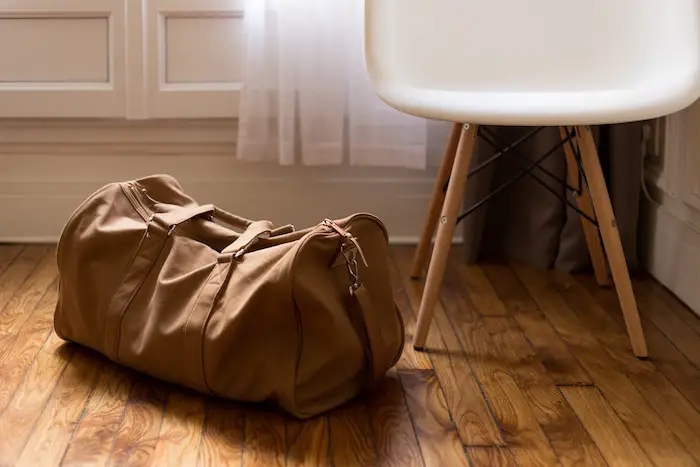
Kenya is an incredible country with breath-taking scenery, sunny beaches, and lush mountains. Being one of the best safari destinations in Africa is an added reason to visit Kenya.
The country is considerably diverse, so your Kenya packing list will depend on which part of the country you intend to visit and the type of activities you will take part in.
Before we dive into what to pack for your Kenya trip, let us talk briefly about the weather.
Weather in Kenya
One of the most critical factors you will want to consider when crafting the perfect Kenya packing list is the weather and the season at the time of your visit.
Kenya typically has a dry and rainy season. The dry season runs from mid-December to March, and the rainy season usually starts from late April through to July and early August.
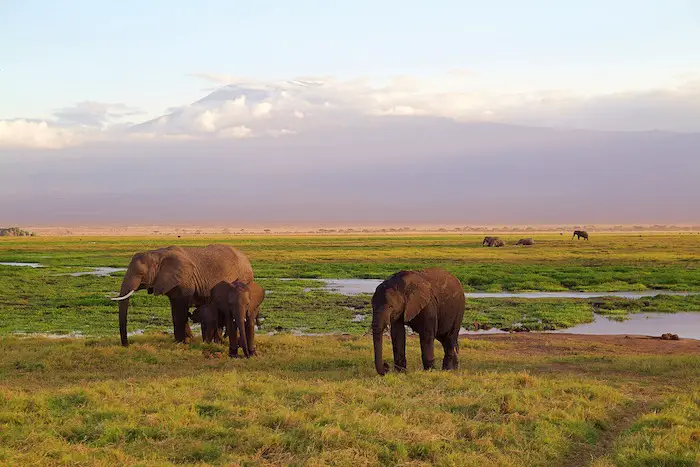
The country also experiences short rains from time to time. However, since the equator runs through the country, the climate is temperate, so even on the rainy season, it never gets too cold.
Assuming you’ll take part in different top excursions and adventures if you visit Kenya, here is a list of recommended items plus tons of good ideas.
21 Top Kenya Packing List Items
The coastal part of the country offers fantastic pearly beaches, so make sure you pack smart-casual in case an opportunity for a romantic dinner date arises.
For safari trips, you’ll need to wear loose and comfortable clothing.
Remember, avoid wearing brightly-colored clothes on a safari – one reason being you need to camouflage with the surroundings as much as possible lest you miss a chance to spot lions.
The second reason is a safari in Africa can be pretty dusty since the roads in Animal National Parks are not tarmacked.
For beach and other activities; however, your preference should guide you best.
Shirt or Blouse
If you’re headed to the Kenyan coast lightweight button-up shirt/blouse are great whether you’re strolling along the white sandy beaches or you’re out for nightlife.
Great Rift Valley and the western part of the country can get a little bit cold at night so be sure to pack a few warm clothes and cozy nightwear .
A pair or two of comfortable pants would be great for early morning excursions like morning or dusk safari walk.
Even in the dry season, the bushes will be full of morning dew enough to make your legs wet, so shorts may not be the best option.
Cargo pants , for instance, are a great alternative as they’re comfortable and can be used for adventurous activities like hiking or rock-climbing.
Hiking Shoes
Pack footwear best suited for the purpose of your trip. If you plan to have an adventure in the mountains, be sure to get a good pair of grip boots.
A smart traveler travels light, so it’s vital to pack multi-purpose clothing and footwear is no exception. Make sure your hiking boots can serve you well if you decide to go on walking safaris.
Ideally, they should be lightweight with at least ankle support, which will perfect for the bush since the terrain can be uneven and rocky. They should also be comfortable to avoid blisters.
Make sure you wear the boots a couple of times before you travel to break them in. You can get some from here .
Casual Shoes
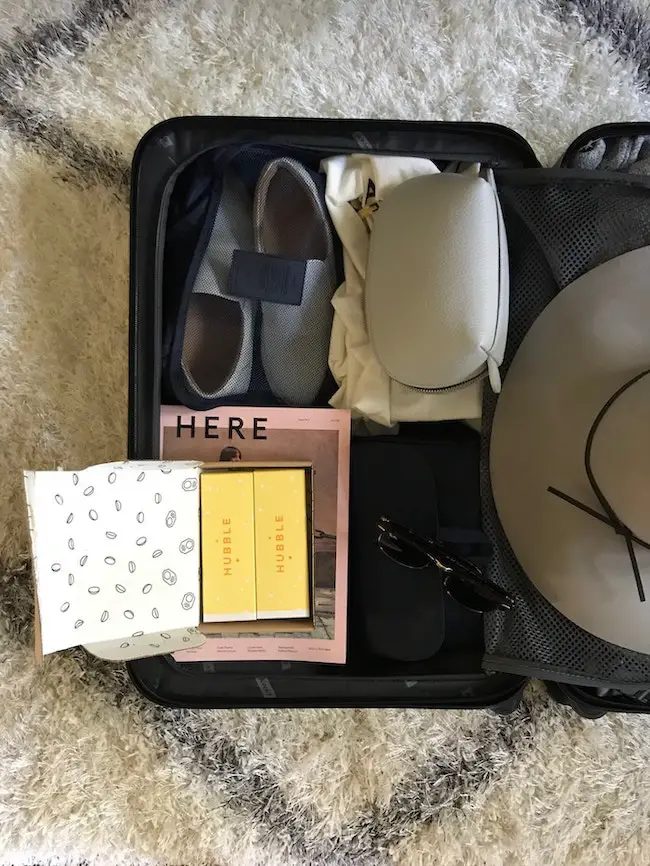
Pack a casual pair of shoes for city strolls or night dates. Sturdy sandals are fantastic, especially if you’re going to explore the charming streets of the coastal part of Kenya.
Most high-end accommodations usually provide their guests with room slippers, but it’s always a good idea to carry flip flops just in case.
Rain Jacket
A rain jacket will be necessary if you’re visiting towards the end of the rainy season. One minute could be all bright and shiny, but the next could be gloomy and raining. You can get one from here .
Kenya is blessed with a lot of sunshine, but too much of anything will definitely make you uncomfortable.
Whether you’ll be going on a safari, a hiking tour, or lying lazily on the beach, a hat is a must-pack item when visiting Kenya. You can get one here .
If you wear contact lenses and you intend to go on a safari, you may want to wear some sunglasses to prevent your eyes from drying out in the heat.
But if you do not wear contact lenses, you should plan on having sunglasses, so you do not have to squint on those sunny days.
Tech and Gear
Camera .
This is an obvious item for any avid traveler, but there is a need to remind you that Kenya is full of picturesque locations. Make sure you invest in a good camera to capture those unforgettable memories.
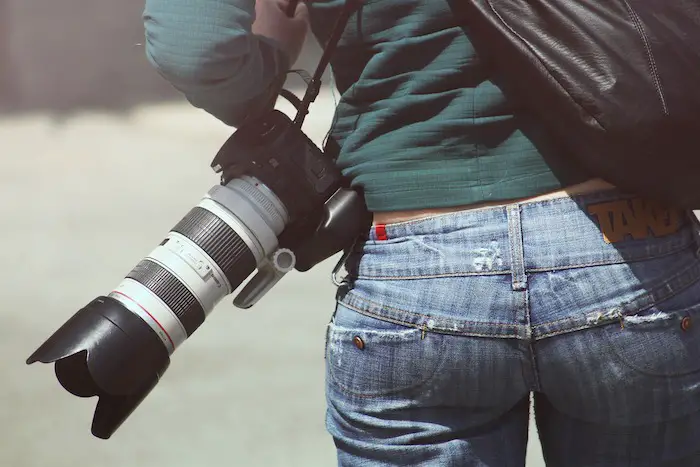
Plug Adapter
If you’re traveling from anywhere else apart from the UK, make sure you pack a plug adapter. A universal plug adaptor would be great, especially if you have any layovers in destinations that use a different type of plug.
Also, invest in proper power converters as Kenyan electric switches supply between 220 and 240 volts.
Portable Charger
This is one of the most essential gadgets as you’ll need to recharge your camera or phone if they run low on battery. Seriously, you can’t afford to miss a moment in Kenya. You can buy one here.
Binoculars
Binoculars are especially crucial for hiking and safaris, where you’ll have the Big Five to spot plus lots of birdwatching opportunities. If you’ll take part in nocturnal game drives, be sure to park night vision equipment .
Power isn’t exactly reliable in Kenya or the capital. Although many high-end hotels have a back-up in case of a blackout, you may want to have a small flashlight just in case. It also helps a lot if you’re camping.
Wet Wipes and Hand Sanitizer
Trust me, wet wipes and sanitizers are not among the most common items in Africa. Kenya is not any different, especially if you are traveling to rural areas.
These items are widely available in Nairobi and other major cities, but you may not have the extra time to run to the store.
Plan to pack a few hand sanitizer bottles/ wet pipes or both. Some parts of the country are short of running water and hand wash so you’ll need a lot of hand wipes so you can stay healthy.
Bug and Insect Repellent
The coast and the western part of the country are famous for having bugs and malaria-causing mosquitos.
Be sure to pack an ample amount of bug and mosquito repellent spray . If you are going on a safari, beware of the tsetse flies, blood-sucking insects that transmit sleeping sickness in humans. A good bug repellent should keep them away.
Sunscreen
This is yet another safari essential and, obviously, a must-pack for a beach getaway in Kenya. You can get one here .
Documents and Details
Passport .
Have your passport plus your stamped visa ready for inspection at the customs offices. You might also need to provide your itinerary as well as travel insurance papers.
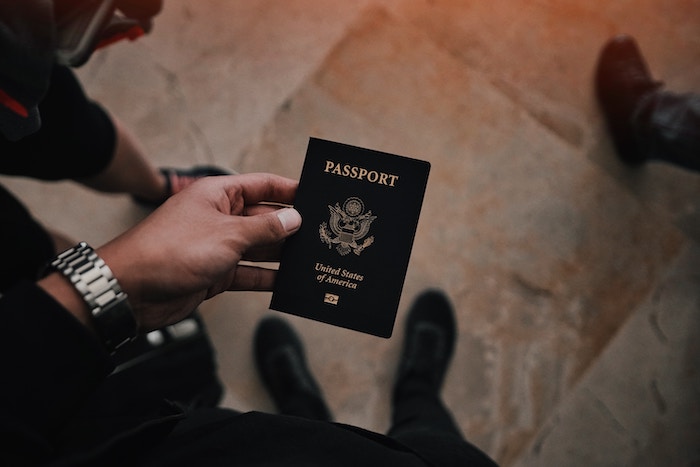
You should also have a list of contacts that can be used in case of an emergency.
Travel Insurance
It is essential to get travel insurance no matter where you are traveling to.
It’s mainly a requirement that is helpful when traveling to Kenya and East Africa in general, where treatment in an excellent health facility can be costly.
Passport Holder
You’ll need a passport holder that can withstand both dusty and wet environments.
A Swahili Phrasebook
This is not a necessity. Swahili is a fun language to learn, and locals appreciate any tourist that attempts to communicate in their native language. Even a simple ‘Hi’ or a ‘Thank you’ will earn you brownie points.
Medications and Vaccination
Before you travel, be sure to pay your doctor a visit so that they can advise on the recommended vaccines.
Most African countries require proof of Yellow Fever vaccination prior to entry. Check the CDC website to confirm if up to date information on whether or not you will need a yellow fever vaccination.
Anti-malaria drugs are essentials, especially if you’re traveling to the western or coastal parts of the country.
You will find all over-the-counter medications in the larger cities, especially in the capital but not in rural areas or in the game reserves. For this reason, it’s advisable to shop in major cities for prescribed or other drugs you might need.
First-Aid Kit
A first-aid kit is essential, particularly if you are planning to take part in adventurous excursions.
What Do People Wear in Kenya?
Women in kenya .
Kenya is one of the most modernized countries in Africa, according to the World Population Re view. So as long as you dress appropriately, you should not encounter any problems. Wearing clothes that are at least knee-length is the standard dress code.

You might be barred from entering spiritual places like temples, mosques, and churches if you are dressed inappropriately.
[su_button url=”https://africawanderlust.com/kenya” target=”blank” style=”soft” background=”#0077be” size=”6″ center=”yes” text_shadow=”0px 0px 0px #000000″]Explore Africa Destinations![/su_button]
Ideally, if you will be visiting any religious institution, maxi dresses will be perfect. When you’re visiting malls or other public places, knee-length skirts or shorts will do.
Men in Kenya
There is no particular dress cord, although if you visit rural areas like the Maasai villages, you might see some men dressed in traditional sheets.
Feel free to dress in traditional sheets if you like, but it is not a requirement. When you’re visiting religious institutions, wear trousers and long-sleeved shirts.
Other Commonly-forgotten Items for a Trip to Kenya
Jeans Sandals Heels Headphones Aloe Vera Mosquito repellant Backpack Travel sheet Travel pillow Kindle/Kindle cover Memory card Headphones Headphone splitter GorillaPod Lightweight scarf
Vitamins/Supplements Dramamine Lip balm Contact lens solution Hairbrush/Comb Loofah glove Underpants/Bras Feminine products Toiletry bag Headlamp Umbrella Journal Small lock Swimsuit
Swimsuit cover-up Hats/Caps Jacket: Women’s & Men’s Luggage/Packing cubes Steamer Razor Immunization Records Drivers License/Photo ID Credit Card and Cash Money Belt Neck Pillow Eye Mask Water Bottle Towels
[su_button url=”https://africawanderlust.com/packing-list/” target=”blank” style=”soft” background=”#0077be” size=”6″ center=”yes” text_shadow=”0px 0px 0px #000000″]See More Packing Lists![/su_button]
Packing List for Kenya: What Not to Bring
It’s important to note that plastic bags are not allowed in Kenya. This includes:
- Ziploc bags
- Grocery bags
- Garbage bags
- Duty-free bags
When traveling in Kenya, it’s advisable to use woven reusable bags instead.
Concluding the Kenya Packing List
The above list contains all the essential items that you’ll need on your Kenyan visit. Most of the items listed are lightweight to help you travel as light as possible.
This post helps you pack everything you need to be comfortable when you are away. But at the same time, not pack too much where it becomes a burden; this Kenya packing list provides precisely that.
You should use this packing list as a checklist to make sure you don’t leave anything behind on your getaway to Kenya.
[su_button url=”https://africawanderlust.com/travel-guides/” target=”blank” style=”soft” background=”#0077be” size=”6″ center=”yes” text_shadow=”0px 0px 0px #000000″]Explore More Travel Guides![/su_button]
If you plan on visiting multiple African countries on your trip, our travel guide , destinations , African national park pages will provide some inspiration. Happy Traveling!
21 Kenya Packing List Items
Tech and Gear
Shirt or Blouse Hiking Shoes Casual Shoes Rain Jacket Hat Sunglasses
Camera Plug Adapter Portable Charger Binoculars Flashlight
Wet Wipes Hand Sanitizer Insect Repellent Sunscreen Medications
Passport Travel Insurance Passport Holder Phrasebook Vaccination First-Aid Kit
Love it? Share and Pin it!

Similar Posts
A detailed guide for your african safari packing list.

Your Ultimate Zimbabwe Travel Packing List
Packing list for two weeks: get ready for your annual leave.
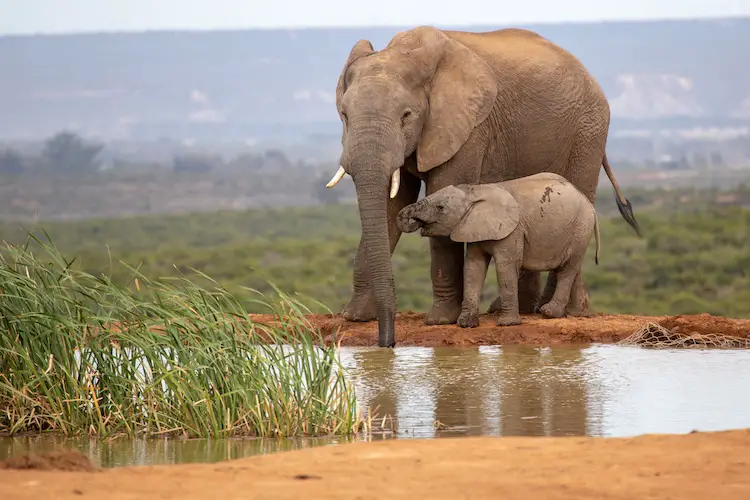
10 Best African Photo Safaris You Must Experience

What are the Main Tourist Attractions in Africa?

Your Comprehensive Safari Packing List for Botswana
I may contradict with you on power…. Power in Kenya is reliable.. Though the article is great.. ?????❤️
Thanks, Cyprian! We appreciate you sharing your honest feedback.
xo ~ Louisa
Great Article, One day i will like to visit Kenya and have some good time in the country, I hope the have good Livescore sporting activities.
Comments are closed.
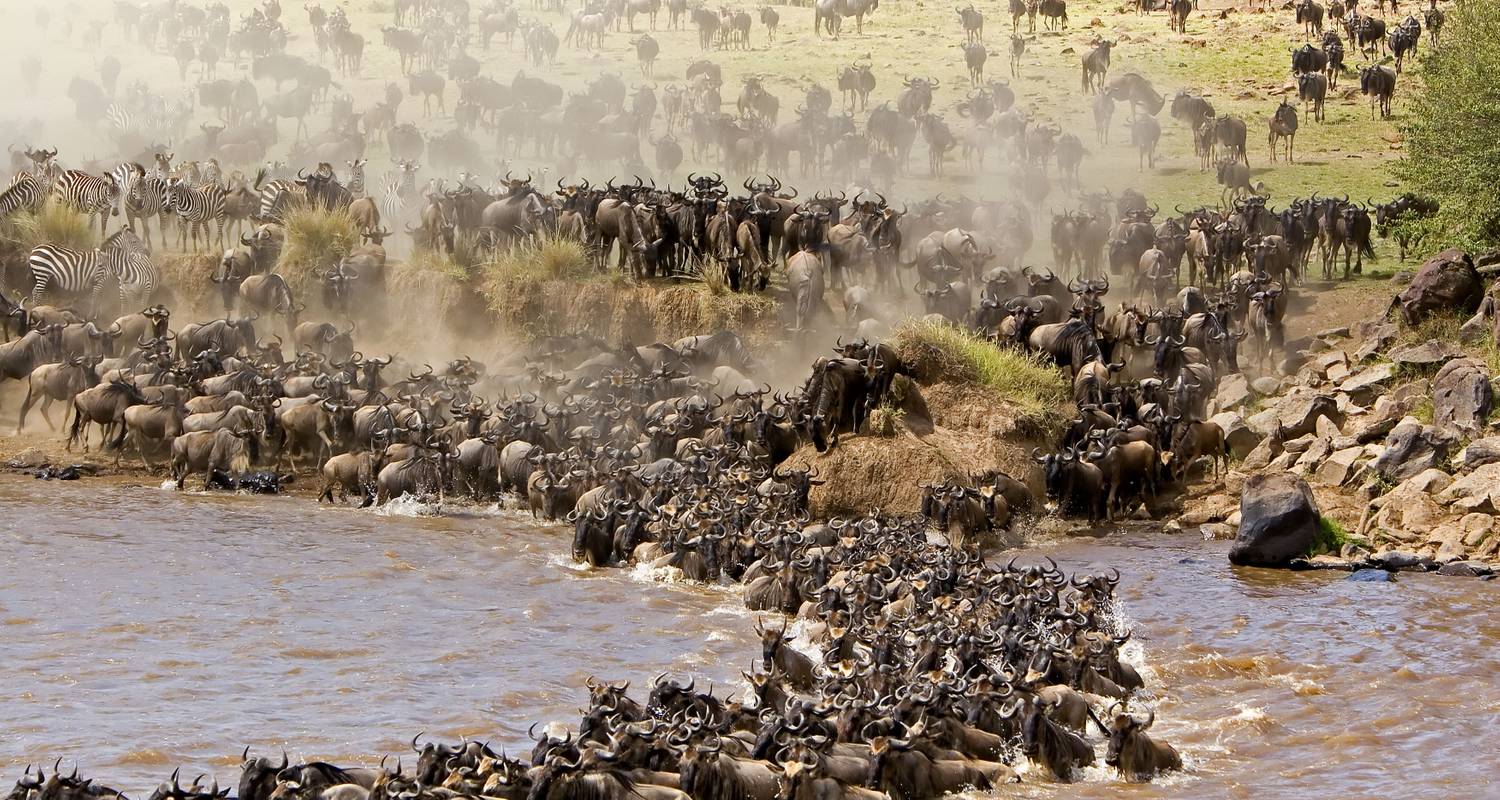
Kenya Safari Tours
- Choose from 800+ Kenya tours
- 1,300+ verified reviews from TourRadar travelers
- 24/7 customer support
10 best safari tours
Compiled by

Nadine Kenya travel expert at TourRadar
6 Days Kenya Budget Tours (with Free Night at Nairobi Hotel)
Amboseli & masai mara budget safari by 4x4 jeep, 5 days masai mara and amboseli wildlife safari, 6 days kenya allround safari - mombasa, 7 days taylor -made kenya luxury safari, kenya camping safari, 5 days kenya medium range safari for amboseli and tsavo parks from nairobi to mombasa, 5 day kenya flying safari, 9 days kenyan dream odyssey, 6 days wilderness treks kenya safari.
“I was so astonished by watching wildlife on a 6-day budget safari in Masai Mara! The safari was organized perfectly.” Mary Theuri, traveled in September 2023

- Christmas & New Year
- Experience the thrill of photographing the Big Five.
- Experience the natural thrill of wildlife encounters.
- Witness the circle of life in action on the African plains.
“We had the best time, everyone on board the 4x4 budget camping safari jeep was friendly. The safari jeep was always clean and tidy and very comfortable.” netssploit, traveled in January 2022
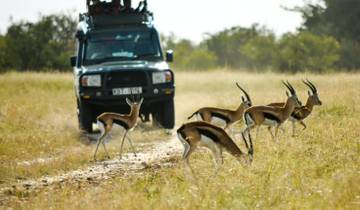
- Explore Mara North and Southern Masai Mara
- Morning game drive in Amboseli before Nairobi
- Sunset views from Amboseli's Observation Hill
“Our 5 day Kenya Masai Mara safari was fantastic. Everything was very good. Good company I can recommend.” RebekahPetinak, traveled in July 2019

- Explore Masai Mara in a 4x4 Jeep
- Witness the Great Migration up close
- View Mt. Kilimanjaro from Amboseli
“Unbelievable journey!” FabioHerrmann, traveled in August 2021
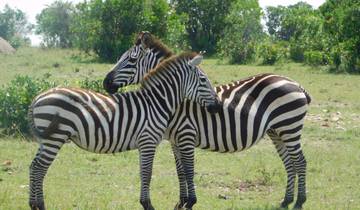
- Discover wildlife in Taita Hills Sanctuary
- View Mount Kilimanjaro from Amboseli Park
- Get close to elephants in Amboseli
“This is one of the best tours ever. I just loved the experience.” Stella Marongah ITC, traveled in June 2019
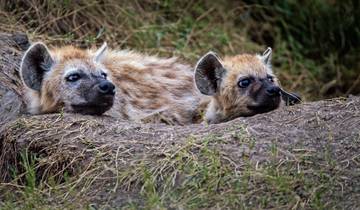
- Spot unique wildlife in Samburu Reserve
- Enjoy game drives in Maasai Mara
- Explore the rugged beauty of Samburu
“It was my first G-Adventure Tour and I liked it very much!” Fabio Amport, traveled in September 2022
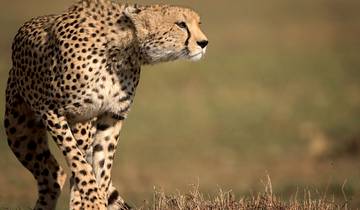
- Discover Lake Nakuru's diverse wildlife
- Meet your group and CEO upon arrival
- Explore Samburu with an afternoon safari
“It was all very easy and well organised. I also found it to be very competitively priced considering the service we received and the standard of accommodation.” EllaCotter, traveled in September 2022
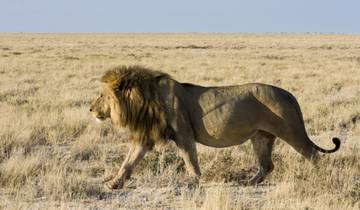
- Enjoy game drives in Tsavo East National Park
- Stay at comfortable full-board safari lodges
- End your tour relaxing at a Mombasa beach hotel
“The price was competitive for the level of personal service we received.” S M, traveled in September 2022

- Explore Amboseli National Park's wildlife
- Fly to Amboseli, spot majestic elephants
- Enjoy breakfast at Masai Mara before departure
“We enjoyed our safari. I appreciate their fast response to emails.” mnaa muti, traveled in March 2024
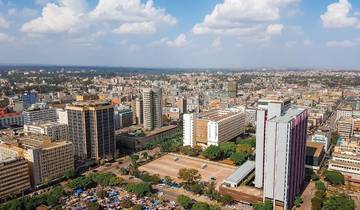
- Explore Amboseli with elephants and Mt. Kilimanjaro
- Enjoy game drives and cultural visits in Mara
- Spot flamingos at Lake Nakuru
“It's a great way to appreciate nature and to relax. You are all safe in their hands.” Sammy Ruwa, traveled in May 2024
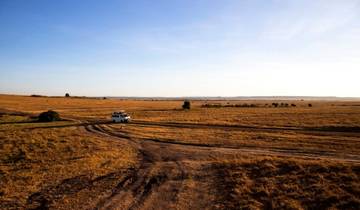
- Watch the drama of predator and prey in Masai Mara
- Enjoy a picnic by the hippo-filled Mara River
- Drive through Amboseli with Mount Kilimanjaro views
More about Kenya
Discover TourRadar
When is the best time to visit Kenya?

Nov 17, 2023 • 7 min read

May is a good time for wildlife photography in Kenya, with incredible light and colors © SerrNovik / Getty Images
With about half the country on either side of the equator, Kenya ’s climate isn’t a straightforward split of dry and wet seasons. In fact, its dry season has a short wet season, and its wet season is interrupted by a dry one – clear as mud, right?
What this means practically is there’s not exactly a single best time to visit Kenya. There is somewhere ideal to visit at any time of year, but for the Great Migration, bird migration or quality diving, you’ll need to pick specific months.
For climbers, the dry season is prime time for safety and visibility. Temperatures are generally consistent across Kenya, with the coast hotter – but humidity can vary. It can get cold in the mountains, and Kenya’s highest peak, Mt Kenya , is always covered in snow.
This East African nation counts more than 42 Indigenous communities in its population of nearly 54 million people, and many festivals and events explore this diversity – from the Lamu Cultural Festival celebrating the archipelago’s Swahili heritage and the exuberant Mombasa Carnival to the diverse gathering that is the Lake Turkana Festival.

July to October and January to February are the best times to see the Great Migration
If the wildebeest migration is on your must-see list, head to the Masai Mara from July onward to observe one of nature’s greatest sights – thousands of wildebeest, zebras and giraffes making the move across the Serengeti.
These high-season months are an enjoyable time to visit any of Kenya’s parks because the grass is thin, there’s little rainfall and sightings are easier as animals congregate around waterholes; they're also climber-friendly because of good visibility and lack of rain. July is also a good time to spot huge flocks of pink flamingos at Lake Nakuru .
Much like July, August is one of the best all-around months to visit Kenya, but it’s a busy time. The Great Migration is well and truly underway, and wildebeest are filling the plains of the Masai Mara. If you’re not in the Mara, August is an excellent time to visit other national parks and conservancies around Kenya .
You can also visit Nairobi without the humid stickiness that makes urban exploring harder work. The capital’s food scene is popping, and Nairobi Restaurant Week is a chance to get your fill. For a hyper-local experience in Samburu County in northern Kenya, the one-day Maralal Camel Derby is a colorful display of camels, costumes and culture.
September offers the best of July and August in terms of weather and wildlife but with slightly fewer crowds, especially in the latter part of the month. You can still catch the migration as hot, dry weather sets in, and there’s almost no chance of rain. It's also when the East African Community Arts Festival JAMAFEST takes place. It’s every two years and rotates between East African nations.
Nairobi hosts the Tusker Safari Sevens in October, an annual Rugby Sevens tournament open to international teams, creating a buzz in the city. October 20 is Mashujaa Day, also known as Heroes Day, honoring those involved in Kenya’s independence movement. It’s a public holiday, and Nairobi and coastal areas are buzzing as Kenyans head to the beaches and parks.
Hot and dry, the high season beckons as the new year begins. January is a popular and busy time for everything: safari, hiking, city exploring, diving, snorkeling and beach stays. Dry season is particularly good (and safe) for climbing Mt Kenya and other peaks and for hiking in places such as Hell’s Gate National Park .
You can usually benefit from low season prices at Masai Mara because the big migration is over, and migratory birds fly into the Mara instead. Celebrate the dawn of a new year on a Mombasa beach ; the city hosts major celebrations.
February sees both the high and dry seasons in Kenya. The lack of rain makes it a popular choice for safari, with minimal muddy terrain and plenty of wildlife to see. It’s also a top time for climbing and hiking , although as it's peak season, crowds and prices can both increase.

November, December and March are the best times for lush landscapes and underwater adventures
November is a fun month for festival lovers, with both Mombasa Carnival and Lamu Cultural Festival celebrating the rich heritage of Kenya’s ethnic groups and communities.
Floats, music and dance epitomize Mombasa’s street party while on the archipelago of Lamu off the northern coast, Lamu Cultural Festival includes traditional dancing called ngoma and centuries-old skills such as dhow (sailboat) building, donkey racing, fish-trap making and dhow regattas.
For Kenya’s South Asian population, Diwali/New Year celebrations take place (sometimes in October), so the temples are buzzing, decorations are up and there’s an above-average production of Indian mithai (sweets). Weather is mixed with sun and rain, but November remains a good bet for safari.
If you like your landscapes lush and abundant, December in Kenya is magical. The rains tend to stop around the middle of the month, and Kenya’s parks take on a gorgeous green hue ahead of the upcoming second “high season” of January and February. Water visibility is optimal during the shoulder season too, so this is a great time for divers and snorkelers.
December 12 marks Jamhuri Day. Jamhuri means republic in Swahili, and this day is when Kenya marks its 1963 independence from Britain and its constitution as a republic a year later, with cultural events, dances and music.
The two-day Rusinga Cultural Festival on Lake Victoria celebrates the threatened culture of the Abasuba people, while the Beneath the Baobabs Festival in Kilifi is one of the country’s best music festivals, with East African and international performers, giant art and cool costumes.
It's getting hotter and more humid as the rainy season beckons, but March remains a particularly enjoyable time to be in Kenya. Prices can be in the traveler’s favor , and often the rains arrive later in the month, so you should be fine in the earlier half.
Diving and snorkeling are rewarding in March, with clear water and good visibility, and beach parties are especially welcome on these balmy evenings as the hot, dry season begins to give way to the rains. Muslim Kenyans observe the holy month of Ramadan, while for walkers, climbers and outdoors types, the Mount Kenya Festival is a celebration of the country’s highest peak.

April to June is the best time for smaller crowds and lower prices
The “long rains” hit in April and May, and sometimes in March too. While the rainy season can be off-putting for some travelers, this time of year can be incredibly rewarding, and the Mara remains accessible in March. Crowds thin out, and you can enjoy the quietness and solitude of nature.
Some safari lodges and camps close during this time because constant rain can hamper visibility in some parks, and the humidity can be uncomfortable. It’s still a great time to be by the coast, but heavy rains can reduce visibility for divers and snorkelers.
But don't dismiss May for safari or wildlife viewings! Yes, the grasses are longer, and sightings are trickier, but the light and colors can be extraordinary for photography. Samburu National Reserve in northern Kenya is a good choice as wildlife gathers on the riverbanks of the Ewaso Ngiro River.
June is a wonderful time to experience Kenya’s highlands, and with low humidity, walking and climbing become a little easier. This shoulder-season month is a lovely time for wildlife viewing, especially in northern Kenya after the long rains, and it’s also the start of the migration. The coast is mostly dry, and prices are a little lower before the high season kicks off in July.
Parades, singing and dancing take place on Madaraka Day on June 1 – the anniversary of Kenya’s move to self rule. The visually spectacular Lake Turkana Festival in the Rift Valley brings together different ethnic groups in the region, to both celebrate their diverse cultures and promote peace.
If you’re into off-road racing or want to watch, the Rhino Charge , a 4x4 race that raises funds to conserve mountain ecosystems, is quite a spectacle.
This article was first published Jul 3, 2022 and updated Nov 17, 2023.
Explore related stories

Jan 2, 2023 • 12 min read
Want to start planning for the year ahead? Featuring sports events, natural phenomena and more, these are 20 amazing trips to consider taking in 2023.

Jul 9, 2024 • 8 min read

Feb 20, 2024 • 17 min read

Jan 2, 2024 • 11 min read

Dec 13, 2023 • 9 min read

Dec 8, 2023 • 4 min read

Nov 30, 2023 • 9 min read

Nov 29, 2023 • 4 min read

Nov 23, 2023 • 8 min read

Nov 21, 2023 • 7 min read

IMAGES
VIDEO
COMMENTS
Fair. Poor. The best months for visiting Kenya (and the best time for wildlife viewing) are during the Dry season from June to October. The wildebeest migration usually reaches the Masai Mara in July or August and remains in Kenya throughout September. It starts moving back to Tanzania's Serengeti National Park around October.
Kenya will abolish visa requirements for global visitors starting in January 2024, guaranteeing a smooth and expedited entry process. The best times to visit Kenya for a safari are from July to September or January to February during the country's dry seasons, however, these are also the most crowded travel times.
African Safari in June. Tanzania, Kenya, Botswana, South Africa, Zambia and Zimbabwe are all good choices for a safari in June. It is a great month to go to the bush; it is mostly dry and many iconic safari destinations offer great wildlife viewing. The dry conditions are excellent for gorilla trekking in Rwanda and Uganda too. Zimbabwe. Zambia.
Game viewing in most safari destinations in Kenya is good in June. First held in 2008, the annual Lake Turkana Festival, a colourful showcase for 14 traditionalist ethnic communities associated with the northern deserts, takes place in the small town of Loiyangalani, usually in June. ...
Temperatures are idyllic. On the other hand, the worst month for safari in Kenya is probably April: the height of the wet season, with many camps closed and roads washed away. Overall best months: June & September-October. High season: July-September & Christmas-February. Low season: March-April & November.
6-Day Mara, Nakuru & Amboseli Special Budget Safari. $780 to $989 pp (USD) Kenya: Shared tour (max 7 people per vehicle) Budget Tented Camp & Hotel. You Visit: Nairobi (Start), Masai Mara NR, Lake Naivasha (Naivasha), Lake Nakuru NP, Amboseli NP, Nairobi (End) Pavillion Safaris and Tours. 4.9 /5 - 14 Reviews.
The months of June through to October mark the start of the long dry season, which is regarded as the best time to go to Kenya for a truly 'Out of Africa' safari experience. The weather is at its best in these dry months, wildlife congregate around water sources, and there is an air of anticipation for the arrival of the Great Migration's mega-herds into the Masai Mara.
For a trip to Kenya, travellers are required to apply for a visa. The easiest, most commonly used visa for going on a safari in Kenya, is the Kenya e-visa . It is valid for 90 days, and can even be extended once to 180 days once you arrive in Kenya. The visa can easily be applied for online and will save you the hassle of having to apply at an ...
Visibility improves as drier conditions and intense grazing make inroads, and this, combined with the cooler weather, makes mid-June to late October indisputably the best time to visit Kenya on safari. There's also, of course, the immense drawcard of the Great Wildebeest Migration, and especially the Mara River crossing in August or September.
July is the best time to visit Kenya, as it's Great Migration time! The first herds of wildebeest, zebra, and gazelles enter the Maasai Mara for the thrilling river crossings. It's dry season, so the weather in Kenya in July is cooler and drier overall, and it is a superb month for safari everywhere. Properties tend to book up at record speed ...
Kenya Safari Packing List June. June is the start of the cold season that lasts two months. You will typically need to wear something warm in most parts of the country both in the mornings and at night. The days are not typically sunny but the temperatures normally rise enough for you to be ok without a shawl or jacket.
After a short rainy season between March and May, June ushers in the beginning of drier weather—and the onset of Kenya's busy high season. The first part of the month is typically a bit wetter and, as you move toward the middle and end, it gets drier and sunnier. The combination of pleasant weather, excellent wildlife viewing, and an abundance of tourist activities make it a great time of ...
Viele Tiere und perfekte Organisation. Review of: 3 Days Maasai Mara Guided Safari from Nairobi. Written September 8, 2024. This review is the subjective opinion of a Tripadvisor member and not of Tripadvisor LLC. Tripadvisor performs checks on reviews. Offshore Canuck. George Town, Grand Cayman84 contributions.
January, February and July to October are the best times to travel to Kenya as it is the dry season - hot and cool respectively. November, December and April to June are the short and long rain months respectively. Late March and October greets the first sprinkles of the long-short rains while late June and early January pronounces the ...
NOV. DEC. January. Average Temperature: Highs - 25°C, Lows - 13°C. Average Rainfall: 13mm. January is generally a warm and dry month in Kenya, with hot temperatures and low humidity. January is a great time to go on safari in Kenya, as wildlife is abundant and easily visible in the dry, open plains. Expect to see incredible birdlife and ...
Kenya Family Safari. Family Holiday. 6 days / 5 nights. With incredible wildlife and fascinating Masai culture, Kenya makes a great family safari destination and this trip includes a private vehicle and guide meaning you can stop as you wish along the way. Guide Price: £4,949 pp.
Kenya Safaris - Ultimate First Safari Guide. Embark on a once-in-a-lifetime adventure with our comprehensive guide to Kenya safaris for first-timers. Our expert travel guide will help you discover the best wildlife reserves, national parks, and accommodation options in Kenya, while providing valuable tips and tricks from experienced safari-goers.
Amboseli National Park is one of Kenya's premium parks. Its signature attraction is the sight of hundreds of big-tusked …. Free cancellation. from. per adult. 35. 4WD Tours. 3 days. This is a private safari. we as well organise group or familly safaris departing from the Mombasa region.
Compare 7-day safaris to Kenya offered by 109 specialized tour operators. Find the best deals using the largest marketplace for African safaris. Best price guarantee! Menu. ... "The best time of the year for a safari in Kenya is the Dry season, from late June to October. At this time animals are attracted to remaining water sources and are ...
Kenya is an incredible country with breath-taking scenery, sunny beaches, and lush mountains. Being one of the best safari destinations in Africa is an added reason to visit Kenya.. The country is considerably diverse, so your Kenya packing list will depend on which part of the country you intend to visit and the type of activities you will take part in.
Find the best Kenya Safari tours in 2024/2025 with TourRadar. Choose from 812 safaris with 1382 tour reviews. Book now and save up to 49% with TourRadar.com! Home / Africa ... Stella Marongah ITC, traveled in June 2019 Safari ; Family ; Wildlife ; Jeep & 4WD ; Christmas & New Year ...
June - Good month to visit Kenya. Emerging from the long rains, June is a great time of year to visit Kenya, with pleasant temperatures and wildlife sightings on the rise. Properties start to book up, but June is quieter than July and August, which are peak Great Migration months and also school holidays. The weather in Kenya in June is a great ...
Nairobi hosts the Tusker Safari Sevens in October, an annual Rugby Sevens tournament open to international teams, creating a buzz in the city. October 20 is Mashujaa Day, also known as Heroes Day, honoring those involved in Kenya's independence movement. ... June is a wonderful time to experience Kenya's highlands, and with low humidity ...
This tour will take you to Kenya's and Tanzania's top safari destinations, giving you a complete overview of this fascinating country. Each destination offers something unique, whether it's endemic wildlife not seen elsewhere, dramatic landscapes, or sheer animal variety. It is the ultimate Kenyan and Tanzanian safari package for those wanting ...